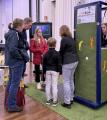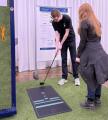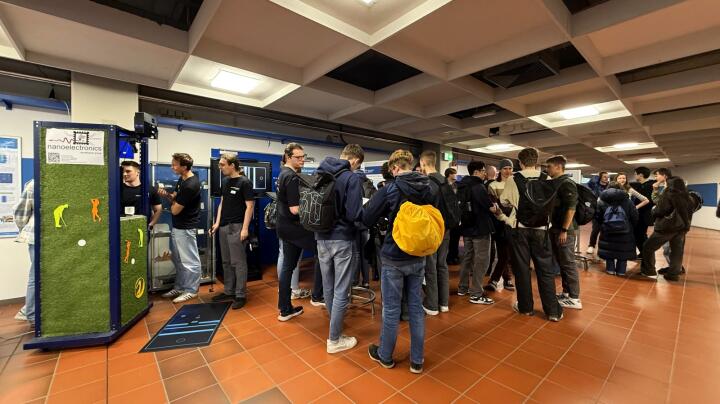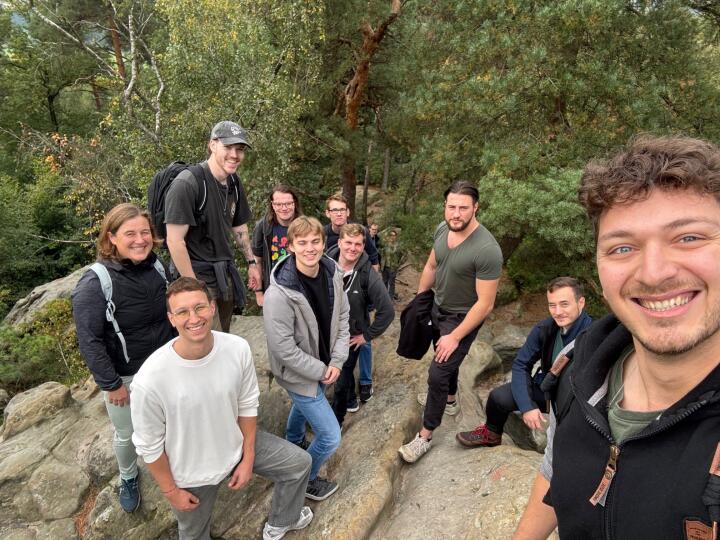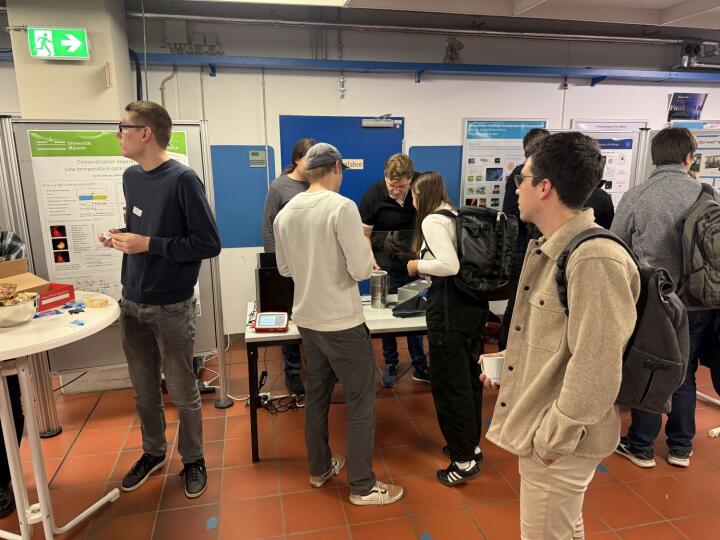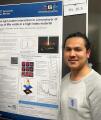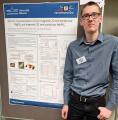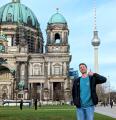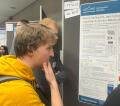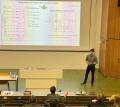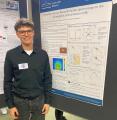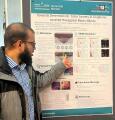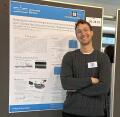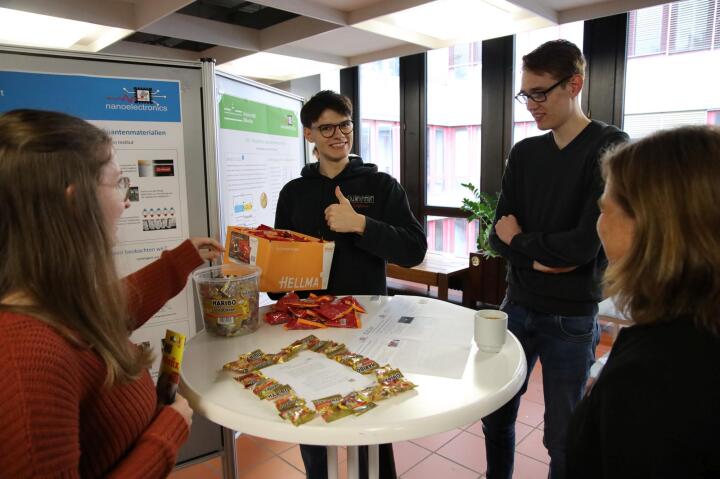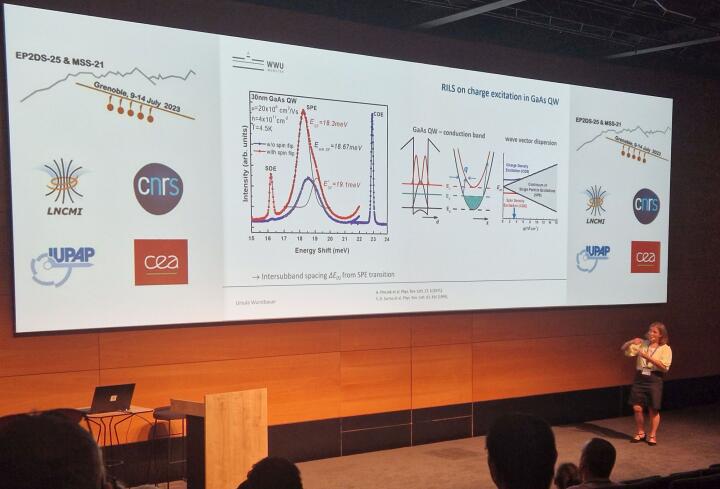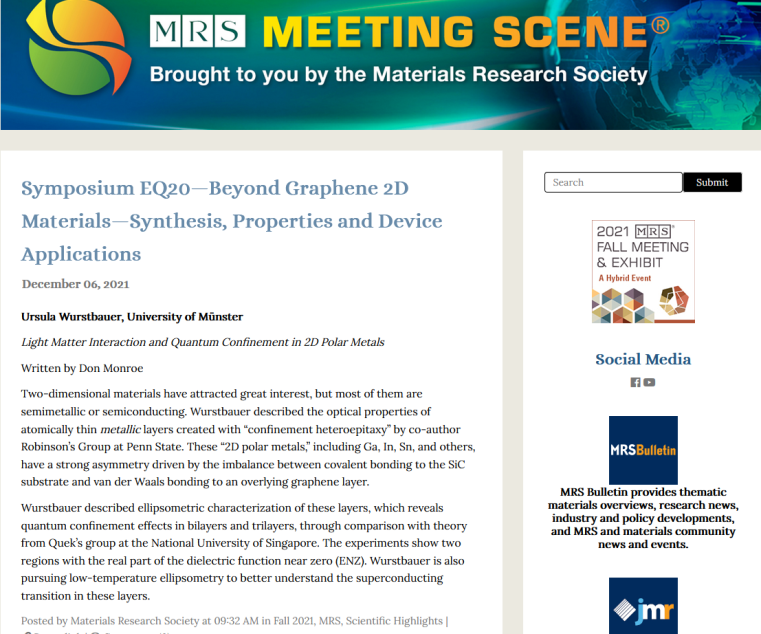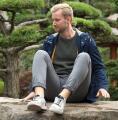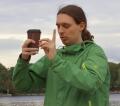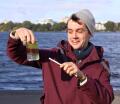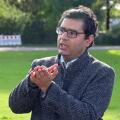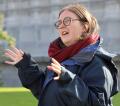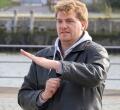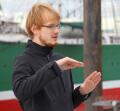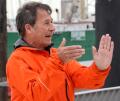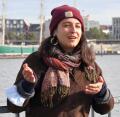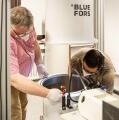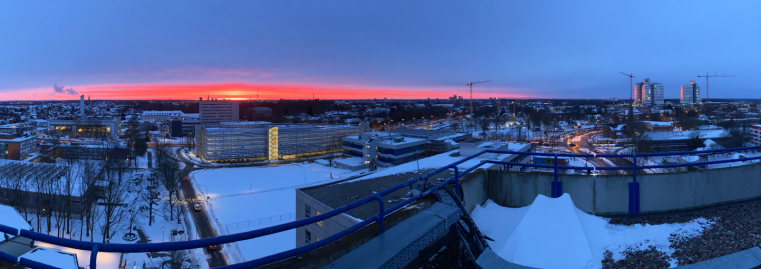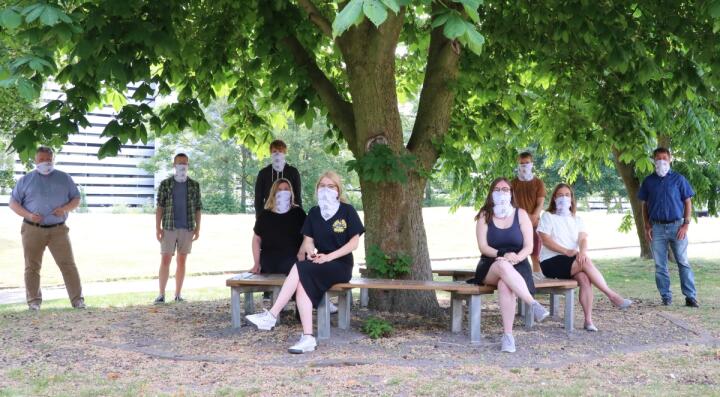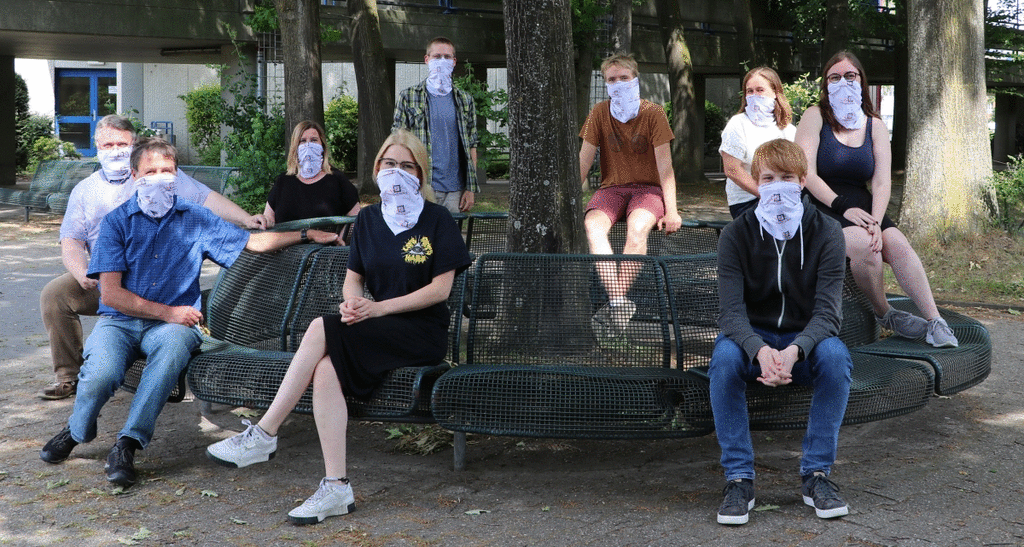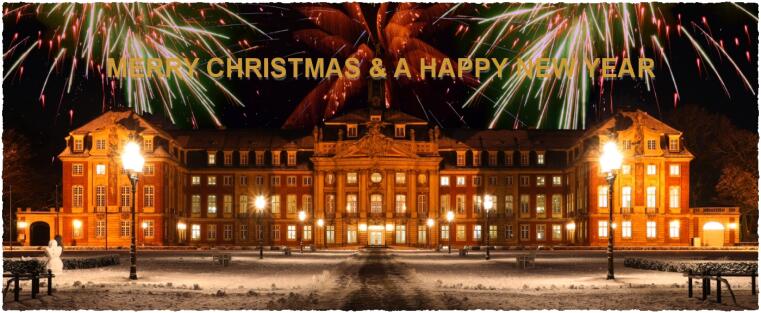
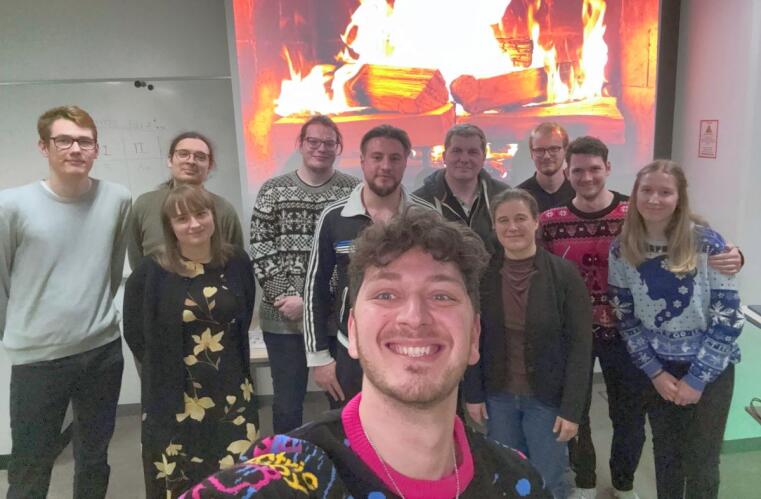
Sichtlich viel Spaß hatten die Arbeitsgruppenmitglieder beim quizzen und verspeisen leckerer Snacks beim weihnachtlichen Speieleabend.
Für Euch im Netz entdeckt, der Adventskalender für Physikbegeisterte: Physik im Advent
15.11.2025
Bundesweite Abschlussveranstaltung „Quantum100“ in der Halle Münsterland
mit Ausstellung, Mitmachständen, Vorträgen und internationalem Abschlusskonzert.
https://quantum100.de/
Fotoimpressionen von unserem Stand Quantum Minigolf - Eine Einführung in die Quantenmechanik ...
Fotos
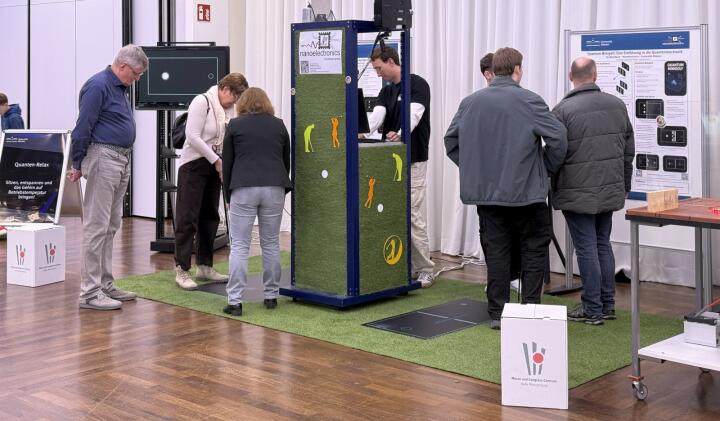
Fotoimpressionen vom Abschlusskonzert - der musikalischen Präsentation des Komponisten Yannik Paget. Sein Werk “Fundamental Interactions” wurde speziell für die Abschlussfeier in Münster angepasst und erweitert. Dabei wird er musikalisch von Studierenden und Schüler*innen und Special Guest David Rauterberg aus Münster begleitet.
Fotos
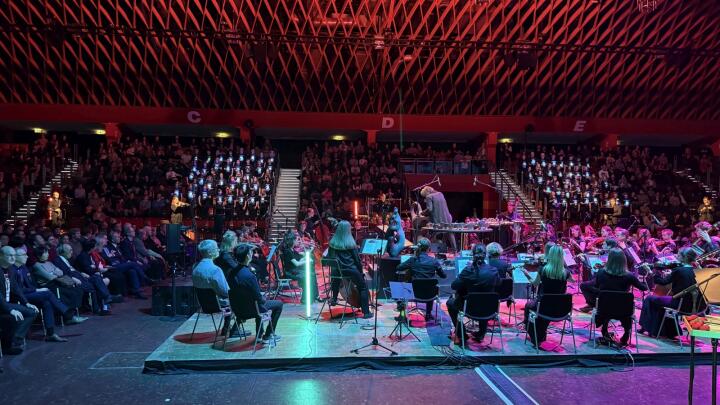
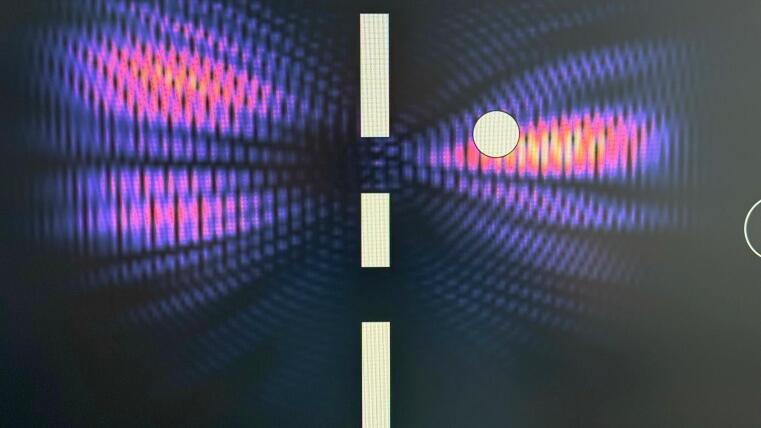
Sport trifft Physik
Wir freuen uns, Dich an unserem Stand „Quanten-Minigolf“ auf dem BaMa Tag 2025 (Mittwoch, 29. Oktober 2025, 15:00–17:00 Uhr) begrüßen zu dürfen. Komm vorbei, spiel mit und erlebe, wie Quanten-Minigolf funktioniert. Entdecke welche weiteren Highlights unsere Arbeitsgruppe für Dich bereithält.
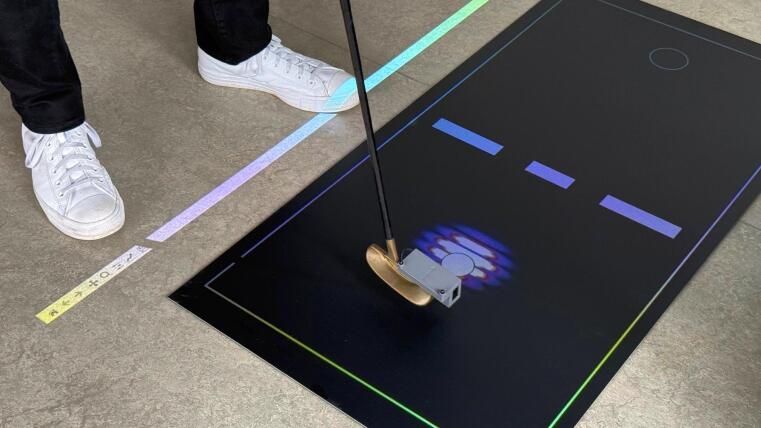
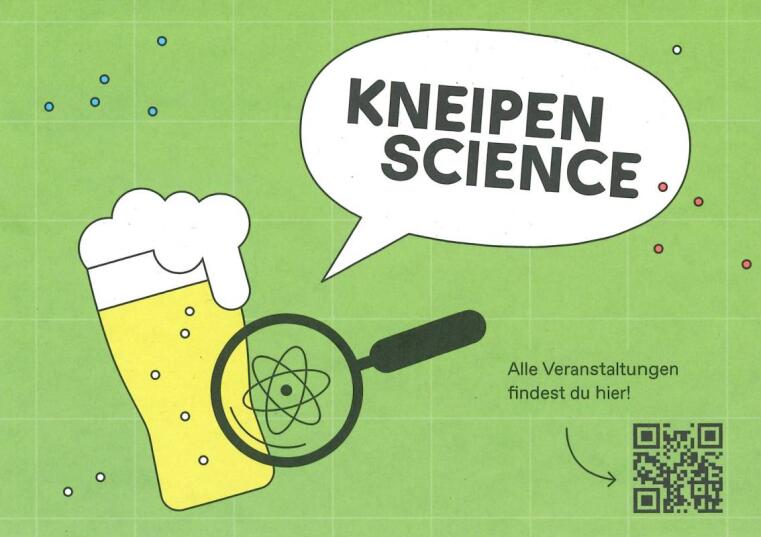
KneipenScience - Wissenschaft für alle
Erlebe Wissenschaft hautnah und verständlich bei Münsters KneipenScience: In entspannter Atmosphäre einer gemütlichen Kneipe präsentieren Forscherende aus der Wissenschaftsstadt Münster spannende Themen aus ihrer Arbeit. Kein Fachjargon, sondern verständliche Erklärungen und interaktive Diskussionen machen diesen Abend zu einem besonderen Erlebnis.
07.10.2025
Was für ein tolle Nachricht aus Stockholm. Für die "Entdeckung des makroskopischen quantenmechanischen Tunneleffekts und der Energiequantisierung in einem Stromkreis" wurde gemeinsam an John Clarke, Michel H. Devoret und John M. Martinis, der Nobelpreis für Physik 2025 verliehen.
Wir gratulieren recht herzlich.
Diese Nachricht passt sehr gut zu der Abschlussveranstaltung der 100 Jahre Quantenphysik-Feier am 15. November 2025 in der Halle Münsterland. Welche praktischen Anwendungen es in der Quantenphysik gibt, das zeigen eine Ausstellung und Vorträge im Rahmen der weltweiten Abschlussveranstaltung. Münsters Physiker sind stolz darauf, dass ausgerechnet sie den Höhepunkt des Geburtstages in ihrer Stadt ausrichten dürfen.
Ein sogenanntes Quantenkonzert mit Live-Video-Effekten wird die Veranstaltung abrunden. Japanische Musiker werden begleitet vom Live-Video-Künstler Sagar Patel aus Paris, zwei Chören des Gymnasiums Paulinum, dem münsterschen Chor "Piano 22/30" und dem Studentenorchester Münster.

30.09.2025 18:00 Uhr - 100 Jahre Quantenphysik
Film „Die Theorie von Allem“ mit anschließendem Nachgespräch (mit Prof. Dr. Ursula Wurstbauer) in Kooperation mit der CINEMA Filmtheater GmbH, Warendorfer Str. 45, 48145 Münster.
Infos und Tickets: https://www.cinema-muenster.de/index.php?id=9027
01.-05.09.2025 Flatlands Beyond Graphene 2025 – Mailand
Unsere Arbeitsgruppe war auf der internationalen Konferenz Flatlands Beyond Graphene in Mailand vertreten. Jakob und Pierre präsentierten dort ihre aktuellen Ergebnisse in Form von Postern und nutzten die Gelegenheit, sich mit Forschenden aus aller Welt auszutauschen. Neben den spannenden wissenschaftlichen Diskussionen blieb auch Zeit, die Stadt Mailand zu erkunden und Eindrücke von ihrer Kultur und Architektur mitzunehmen.
Fotos
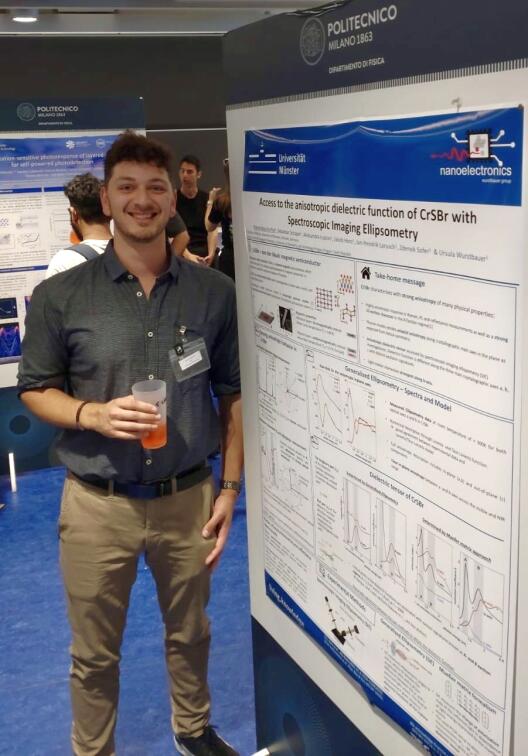
September 2025
We warmly welcome our new postdocs Dr. Shreenanda Gosh and Victor Kärcher to our research group.
We wish you both much success and a great time on our team.
Herausragende Masterarbeit am Fachbereich Physik ausgezeichnet
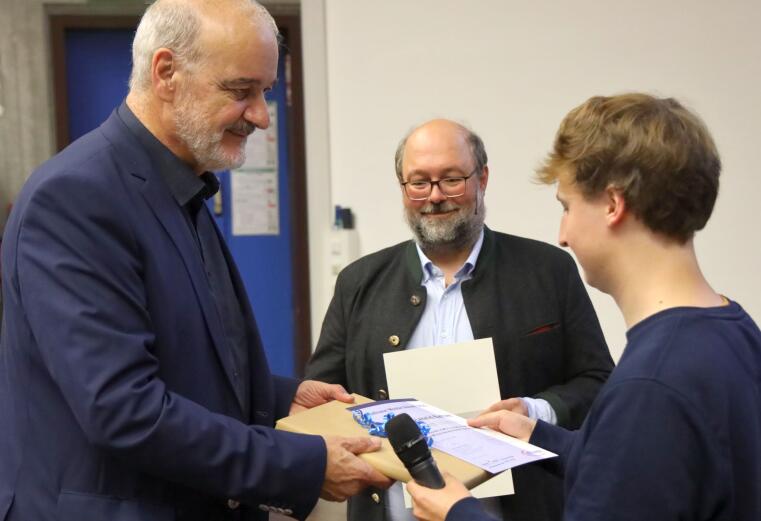
Nicolai-Leonid Bathen erhält den „Infineon-Master-Award“ 2025
Für seine herausragende Masterarbeit zur Kontrolle und Untersuchung von atomar-dünnen 2D-Schichtkristallen hat Nicolai-Leonid Bathen den mit 2.000 EUR dotierten „Infineon-Master-Award“ erhalten. Den Preis verleiht der Fachbereich Physik der Universität Münster mit der Infineon Technologies AG für die beste Masterarbeit eines Jahres. 2D-Schichtmaterialien sind vielversprechende Kandidaten für zukünftige quantentechnologische Anwendungen. Besonders attraktiv macht sie die Möglichkeit, Schichten verschiedener Materialien nahezu beliebig aufeinanderzustapeln und dadurch neue Eigenschaften zu erzeugen.
Von zentraler Bedeutung dabei ist der Drehwinkel, der jeweils zwischen zwei Lagen stufenlos wählbar ist. Er bestimmt die neu erzeugten Eigenschaften und macht sie kontrollierbar. Beispielsweise können die Materialien supraleitend, isolierend oder magnetisch werden. Nicolai-Leonid Bathen ist es gelungen, die Drehwinkel mit einer räumlichen Auflösung im Sub-Mikrometer-Bereich mit einfachen optischen Mitteln zu bestimmen. „Da die exakte Kenntnis des Drehwinkels ausgesprochen wichtig ist, ist die Entwicklung dieser präzisen Messmethode ein wichtiger Beitrag auf dem Forschungsfeld der 2D-Schichtmaterialien“, betont Prof. Dr. Ursula Wurstbauer vom Physikalischen Institut, in deren Arbeitsgruppe Nicolai-Leonid Bathen die Masterarbeit angefertigt hat.

Link zur offiziellen Pessemeldung: https://www.uni-muenster.de/news/view.php?cmdid=14897
Links zu dieser Meldung
Uni-News zum Thema: „Physiker untersuchen 2-D-Materialien mit ganz besonderen Eigenschaften“
Uni-News: Porträt von Prof. Dr. Ursula Wurstbauer
Der Infineon-Master-Award und Infineon-Promotionspreis für herausragende Forschung in der Physik
May 2025
We warmly welcome our new working group member, Dr. Ana Senkić from Zagreb. She will be joining our team starting in May. We wish her much success and look forward to a pleasant and enjoyable time with you.

April 10, 2025
Another milestone in the new building for the Institute Group 1 Physics has been achieved: the shell is complete. Today, the traditional topping-out ceremony was held. We are already looking forward to the completion and occupancy of the new building, which will feature state-of-the-art, vibration-free laboratories for our nanophysics experiments.

April 09, 2025
After the working group had spent the morning cleaning the laboratory, the hard-working helpers were treated to delicious homemade nitrogen ice cream.
DPG Meeting of the Condensed Matter Section
This spring, several members of our research group took part in the DPG Meeting of the Condensed Matter Section, which was held in the historic city of Regensburg. The conference offered a great opportunity to present our current research through talks and posters, and to exchange ideas with researchers from a wide range of institutions.
Beyond the scientific program, we also enjoyed exploring the charming city center and spending time together as a group.
We’re thankful for the opportunity to attend and are already looking forward to the next DPG Meeting.
Fotos

International Winter School on Electronic Properties of Novel Materials
March 08-14, 2025
Elena, Pierre, and Jakob attended the International Winter School on Electronic Properties of Novel Materials (IWEPNM). An exciting scientific program and a festive evening celebrating the 40th anniversary of the Kirchberg Winter School made their stay unforgettable. But beyond the program, there were also opportunities to explore the beautiful surroundings and discover delicious food.
Fotos
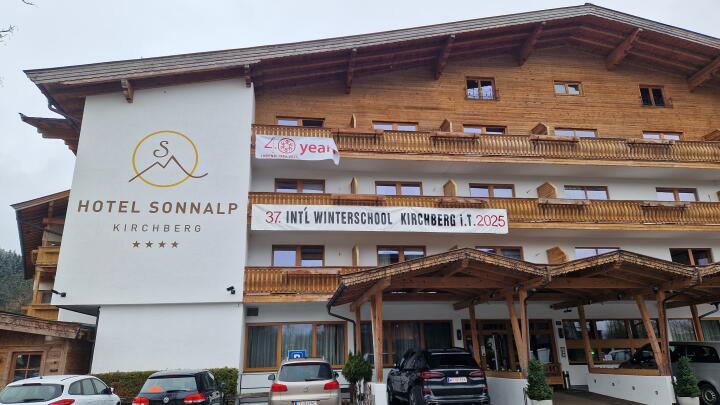
March 2025
We would like to extend a warm welcome to the four new Bachelor students, Xenia, Denis, Malte and Sven. We wish you a great time in the working group and much success in your work.
International Winterschool on New Developments in Solid State Physics in Mauterndorf
February 09-14, 2025
Nicolai, Hendrik and Ursula participated in this year's International Winterschool on New Developments in Solid State Physics. The meeting took place in the village of Mauterndorf in the Austrian Alps. Ursula gave a talk on our current research about collective excitations, moiré minibands, and twist disorder in van der Waals structures. Hendrik und Nicolai contributed to the poster session where they presented posters showcasing some of their latest research. Beyond showcasing our own research, the winterschool provided an excellent opportunity to learn from and engage with other solid-state physicists.
With good weather throughout the event, the conference also provided a great opportunity for some skiing and snow hiking.
Fotos
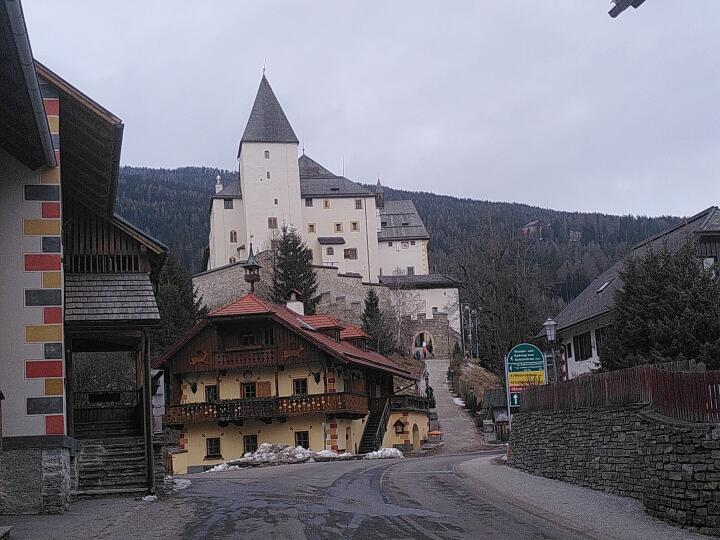
Ursula gave her presentation on the topic "Collective excitations, moiré minibands and twist disorder in van der Waals structures" on the OPON 2025.
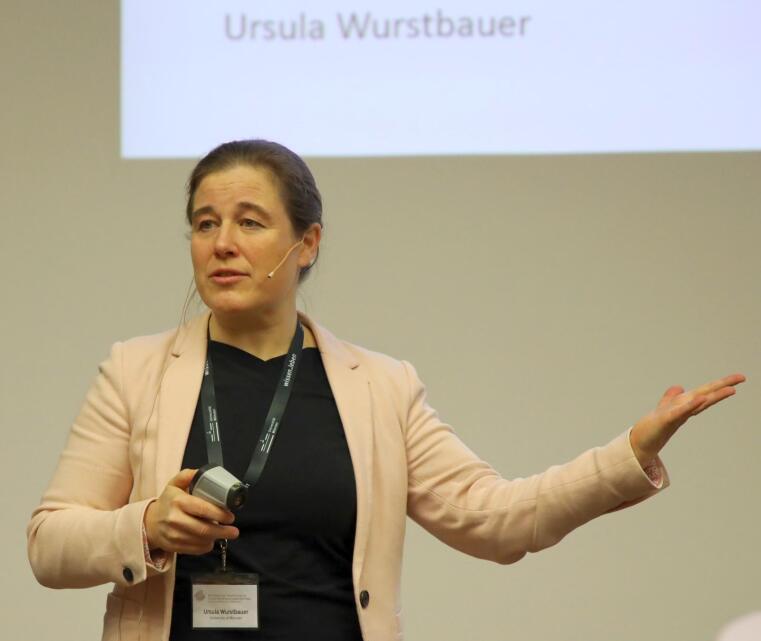
Elena, Pierre and Jakob presented their posters at the 8th International Workshop on the Optical Properties of Nanostructures (OPON 2025), which took place from 12 to 14 February 2025 in Münster.
Fotos

Bericht in der Januarausgabe 2025 der Unizeitung wissen | leben, "Mit Neugier in jeden Tag", Seite 9
Part of the working group took the opportunity to go ice skating on the outdoor area at the Germania Campus. Afterwards, the working group came together at the institute and enjoyed some delicious homemade food and a great evening together.


December 2024:
A successful year slowly closes with many Bachelor and Master theses finished and successfully defended. We are proud of you Ariana and Laura who both very recently defended her Master theses. We wish you all the best for your future!
We are also proud of and also of Ulrich, Daniel, Oskar, Thomas, Lara, Jan-Hendrik wo all successfully finished their Bachelor-Thesis projects with us. We wish you all great success for the future and are happy that a lot are continue their journey with the nanoelectronic group.
This year we also had to say good-by to our postdoc Nihit who continued as ARISE Fellow at EMBL Heidelberg. We wish you a continued successful time and all the best for your future.
Ariane successfully defended her Master project
On Wednesday (11.12.), about half of the group members joined Ariane for a trip to University of Twente (Netherlands), where she successfully defended her Master project done in close collaboration with Prof. Rebecca Saive funded by a collaboration grant project of both universities. This was a truly international effort since Prof. Hernán Míguez, Professor of the Spanish National Research Council in Seville (Spain) participated as third thesis examiner. The trip was completed by an interesting lab tour at the MESA+ Institute followed by a celebration and social gathering with members of both groups enjoying delicious Stroopwafel and Christmas cookies.

November 2024:
We warmly welcome our new group members Linus and Jannik doing their Master and Bachelor projects with us. We wish you great success and we look forward to great and enjoyable time with you.
Oktober 2024 - Science Communication - Astroseminar Poster Prize
In this year’s Astroseminar, Ariane and Nicolai presented their research on 2D materials to the general public and were awarded a poster prize, which allowed them to share their research in a short talk during the event.
We are grateful for the opportunity to share our solid-state physics research at an event mostly dedicated to astrophysics with a broader audience, and we look forward to next year’s Astroseminar.
Fotos
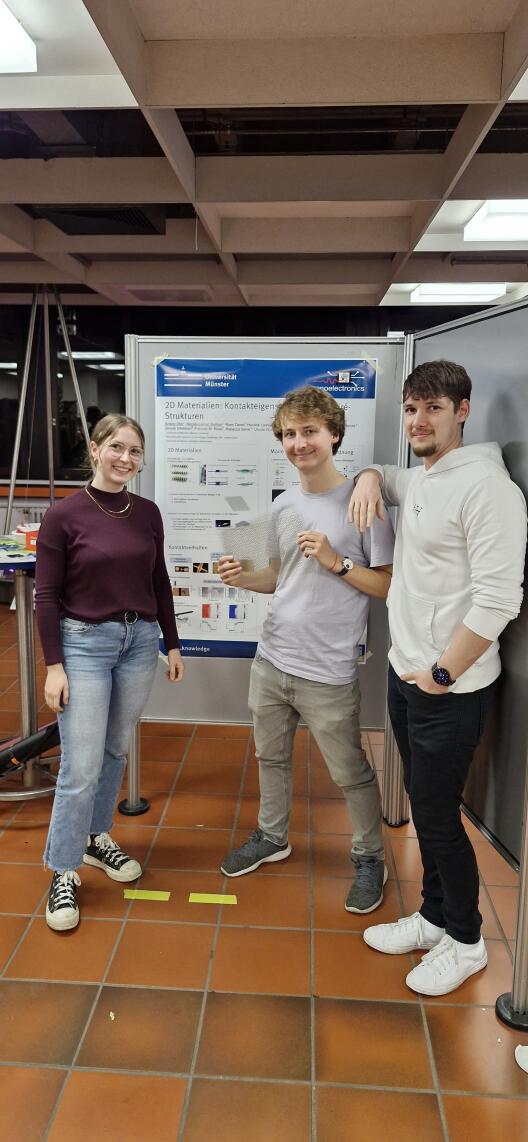
Oktober 2024
Als neue Arbeitsgruppenmitglieder begrüßen wir herzlich die PhD Studentin Elena und den Bachelor Studenten Manuel. Wir wünschen Euch einen guten Start in unserer Arbeitsgruppe und viel Erfolg bei Eurer Arbeit.
Forscher steuern elektronische Eigenschaften von Moiré-Kristallen
Team um Ursula Wurstbauer weist erstmals kollektives Verhalten von Elektronen in zweidimensionalen Kristallen nach
Collective Charge Excitations between Moir´e Minibands in Twisted WSe2 Bilayers Probed with Resonant Inelastic Light Scattering
IG1 SUMMERGAMES 2024 - Was war das für ein tolles Event!
Am 11.07.2024 veranstaltete die Institutsgruppe 1 (IG1) die ersten IG1 SUMMERGAMES. In fünf Teilprüfungen traten die verschiedenen Arbeitsgruppen und Institute im Haus gegeneinander an. Teamgeist, Wissen, Geschicklichkeit, Stimme und künstlerischer Ausdruck, sowie konstruktives und handwerkliches Geschick waren von den abgesandten Teams gefragt. Das Moderatorenteam führte die ca. 180 Anwesenden durch einen unterhaltsamen, lustigen und spannenden Abend. Die Helfer vom Catering versorgten die Kollegen mit kühlen Getränken, leckeren Salaten und frisch Gegrilltem. Unser Team "nanoelctronics" hatte alles gegeben und konnte in der Gesamtwertung auf einen respektablen Platz 3 landen. Unser besonderer Dank gilt dem Orgateam!
Fotos
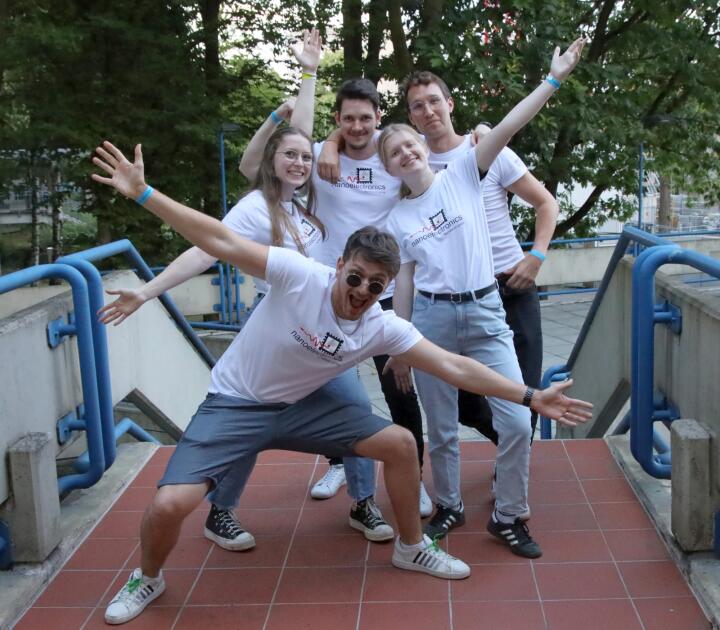
July 2024
We warmly welcome Dr. Aleksandra Lopion as a new working group member. We wish you great success and we look forward to great and enjoyable time with you.
DPG Meeting of the Condensed Matter Section, Berlin
Recently, many members of our research group had the opportunity to attend the DPG Meeting of the Condensed Matter Section in Berlin. This annual gathering allowed us to showcase our research results, which we have compiled over the past few months, through both posters and presentations. Beyond presenting our own research, the meeting served as an ideal platform for learning from and interacting with other researchers.
In addition to participating in the conference, we also had the chance to explore the vibrant city of Berlin and enjoy other group activities.
We are grateful for the opportunity to participate in the conference and are looking forward to next year's event.
Fotos

Nature paper with Columbia — Gravitons in FQHE liquid
Together with colleagues from Columbia University (USA), Princeton University (USA), and Nanjing University (China), we report in the journal Nature on the first experimental evidence of collective excitations with spin called chiral graviton modes (CGMs) in a semiconducting material. This graviton modes are the solid-state analogue to a graviton, a yet-to-be-discovered elementary particle better known in high-energy quantum physics for hypothetically giving rise to gravity. Gravity is one of the fundamental forces in the universe. The graviton-like quasi-particle has been discovered in fractional quantum Hall liquids hosted in an ultra-clean gallium arsenide based heterostructure. Further studies of CGMs could support to develop a better understanding of the links between quantum mechanics and Einstein’s theory of relativity.
Columbia's story: A team of scientists from Columbia, Nanjing University, Princeton, and the University of Munster, writing in the journal Nature, have presented the first experimental evidence of collective excitations with spin called chiral graviton modes (CGMs) in a semiconducting material. Read more ...
New Scientist : We've glimpsed something that behaves like a particle of gravity. Gravitons, the particles thought to carry gravity, have never been seen in space – but something very similar has been detected in a semiconductor. Read more ...
Conferenz at Kirchberg (Tirol)
While visiting the International Winterschool on Electronic Properties of Novel Materials (IWEPNM) 2024 in Kirchberg (Tirol, Austria) our four PhD students Hendrik, Sebastian, Jakob and Pierre-Maurice presented some Poster about their current research topics.
Also, the weather was quite nice to explore the surroundings and to talk outside about new and exciting scientific topics.
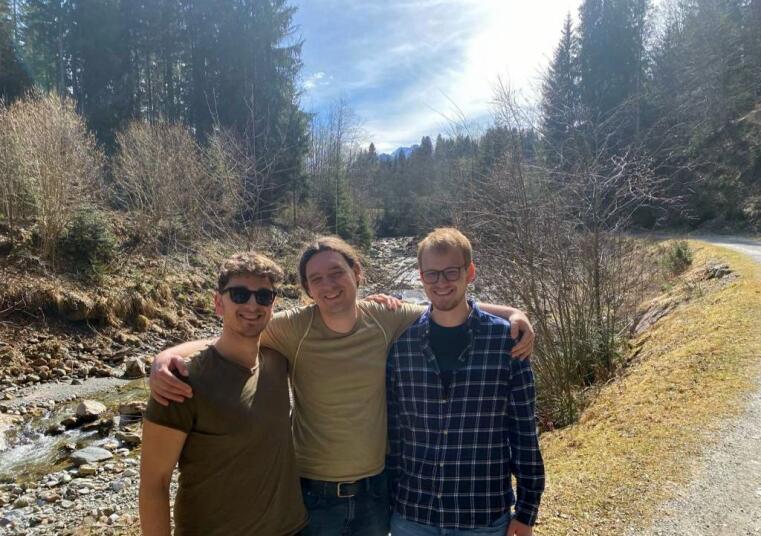
Artikel der Unizeitung wissen|leben Nr. 6, 4. Oktober 2023
Eine Schatzkiste für die Forschung
Physiker untersuchen 2-D-Materialien mit ganz besonderen Eigenschaften
Postdoktorand Dr. Nihit Saigal aus der Arbeitsgruppe von Prof. Dr. Ursula Wurstbauer am Physikalischen Institut der Universität Münster hat im Labor das Zubehör zurechtgelegt, um ein ultradünnes, zweidimensionales Material herzustellen: einen silberfarbenen Kristall aus Molybdändisulfid, eine viskoelastische Polymerfolie – und Klebeband. Vorsichtig legt er ... Artikel weiterlesen >>

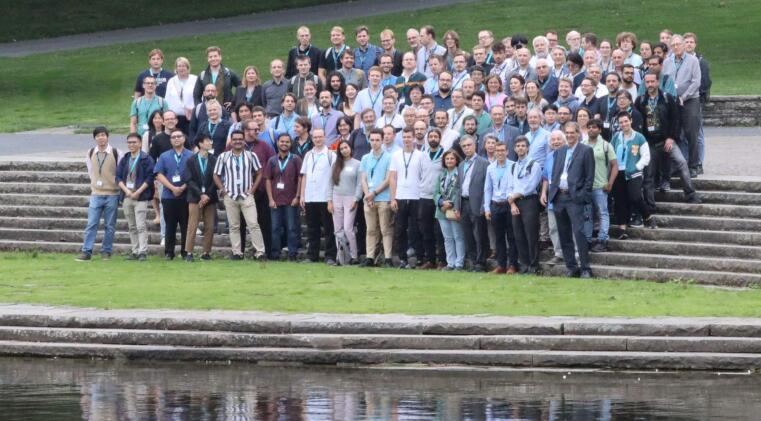
EDISON 22 - The 22nd International Conference on Electron Dynamics in Semiconductors, Optoelectronics and Nanostructures - will be held in Münster (Germany), 14 - 18 August 2023. EDISON 22 will highlight the latest progress in the field of fundamental physics and applications of electron dynamics in semiconductors, optoelectronic devices, and nanostructures.
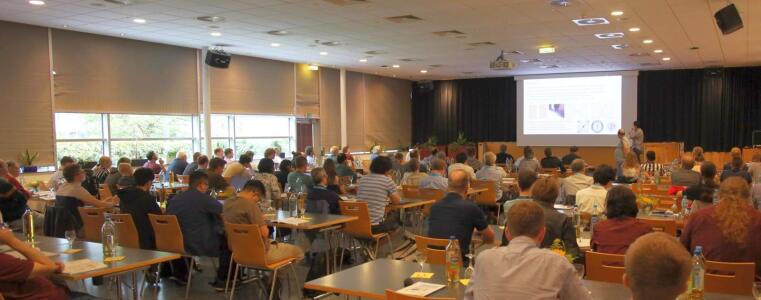
On August 9th, 2023, the working groups of Prof. Wurstbauer and Prof. Krenner met for a joint company outing. After it had only rained many days before, we started our bike tour at 9:30 a.m. with lots of sun and blue skies. The route led us via small Pättkes away from the traffic in the direction of Pleistermühle and then along the Werse to Stapelskotten. The level of the Werse had already risen significantly due to the rainfall over the past few days. From Stapelskotten it went through Wolbeck into the large forest area Tiergarten and then back to the Werse to Albersloh. We didn't let ourselves be discouraged by a broken tire and after the repair with many helpers we went to Frank's house in Albersloh. In the garden everything was already prepared for the BBQ and cool drinks were ready. Numerous delicious and above all homemade salads and side dishes complemented the grilled food. At pleasantly warm temperatures, we savored the liquid and solid food. Towards evening we went back to Münster by bike, but this time without detours. Thanks to everyone for the nice day together.
Fotos
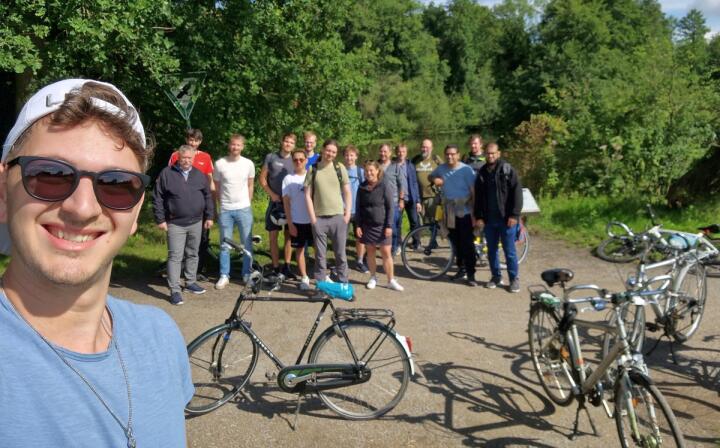
03.07.2023
Neue grenzüberschreitende Projekte zwischen Münster und Twente
Hochschulleitungen vergeben vier „Collaboration Grants“ / Interview mit Claudia Voelcker-Rehage über ein Siegerprojekt 2022
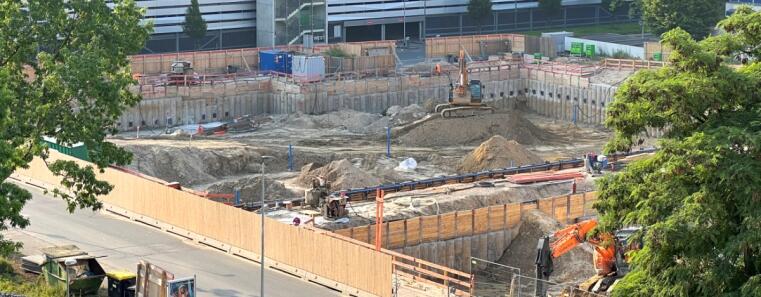
Spatenstich für den Neubau der "IG1"
Physikalisches Institut
Am 28.06.2023 hat der "symbolische" Spatenstich für den Neubau der "Institutsgruppe 1" stattgefunden. Dazu ist in den WWU News ein Interview mit Dr. Andreas Gorschlüter erschienen.
19.01.2023
Herzliche Glückwünsche zum erfolgreichen Abschluss der Ausbildung als Physiklaborant, verbunden mit den besten Wünschen für eine weiterhin gute Zusammenarbeit, wünschen wir unserem nun Ex-Azubi Nico. Wir freuen uns, dass Du uns im Institut erhalten bleibst und Dein Know how nun in der Vorlesungsvorbereitung einsetzt.
26.10.2022 - BaMa Day 2022
Thank you for visiting our booth and for your interest in our scientific work. If you would like to become part of our working group, do not hesitate to contact us. See our master and bachelor projects at open positions
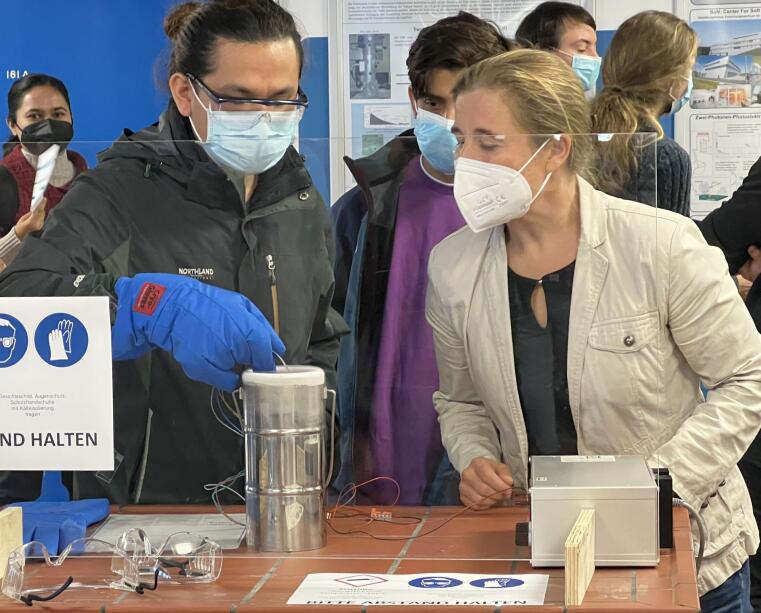
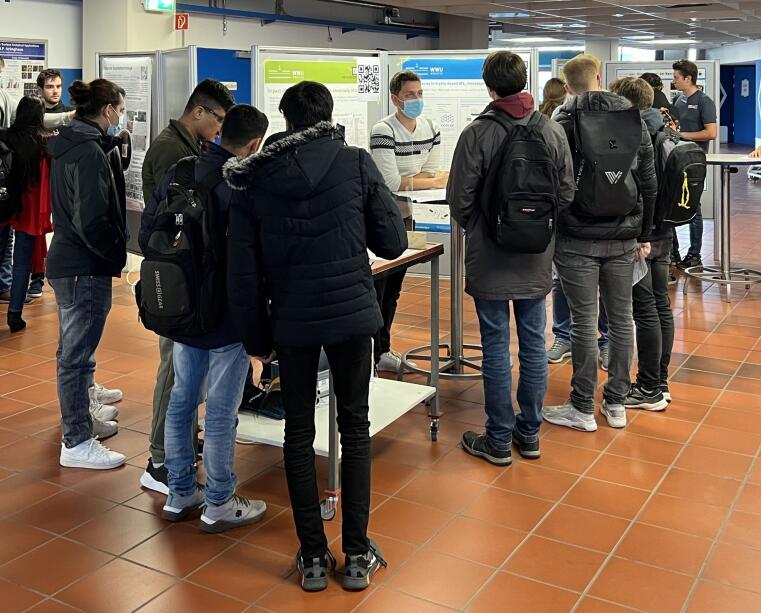

24.-28.09.2022
Where: Physikzentrum Bad Honnef
Scientific organizers: Prof. Dr. Ursula Wurstbauer, U Münster, Germany • Prof. Dr. Nahid Talebi, U Kiel, Germany
WE-Heraeus-Seminar - 2D Materials and Hybrids: Hybrid Quasiparticles in Quantum Materials
Quasiparticles and their mutual interactions form the basis for quantum technologies and integrated opto-/electronic circuits with embedded novel functionalities. It is therefore important to understand the underlaying correlations including coherence properties and their dynamics on a very fundamental level. Material platforms hosting such quasiparticles and potentially allowing the implementation of integrated circuitries with intelligent or quantum functionalities are two dimensional (2D) materials and their hybrids formed from e.g. coupling with plasmonic structures. Two-dimensional materials exhibit a rich set of quasiparticle excitations, together with exciting spin and valley properties and topological non-trivial materials. 2D materials such as the intensively studied class of transition metal dichalcogenides (TMDCs), tetradymites, and further 2D materials with distinct topological properties have emerged as a platform to realize, understand and tailor quantum hybrid structures. They can be combined with arbitrary substrates, be twisted, and be assembled into heterostructures. Those 2D materials can be interfaced with plasmonic films and nanostructures to fundamentally study weak and strong interactions, as well as energy and information transfer between the different quasiparticles and for the realization of hybrid quasiparticles that can be integrated in functional units. The aim of the seminar is bringing together a group of excellent internationally well-established researchers working on 2D materials, hybrids and their quasiparticles from various points of views using different characterization tools, materials, or theoretical methods to foster synergy. Young researchers at the PhD or PostDoc levels will be encouraged to actively participate with poster presentations, at a panel discussion and a synergy workshop session.
The conference language will be English. The Wilhelm and Else Heraeus-Foundation bears the cost of full-board accommodation for all participants.
September 2022
Hendrik and Pierre-Maurice visited the FLATLANDS 2022 — 9th Flatlands beyond Graphene on Lanzarote (Spain), where they presented their new results in the poster session.
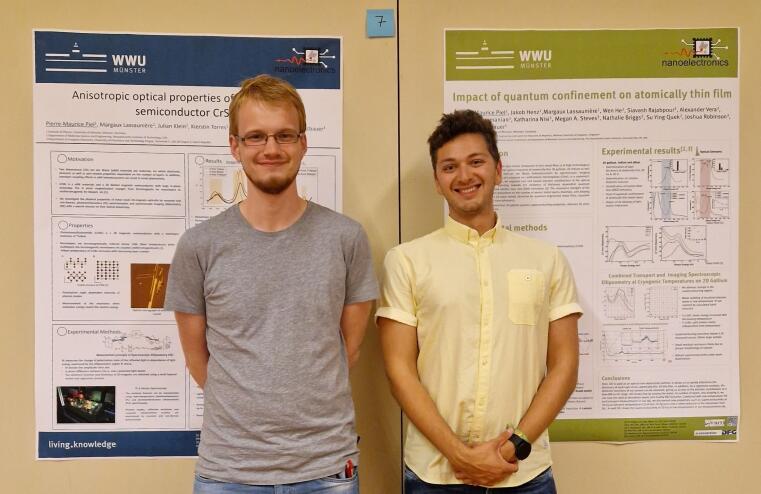
August 2022
With sun and warm temperatures, a little shower and great views of the surrounding area, the working group started a wonderful company outing in the Teuteburg Forest. It started with the bus from Münster to Dörenthe. At the Dörenther Cliffs parking lot, the working group surprised the birthday child Ursula with a second breakfast. Fresh sandwiches, cold drinks and delicious birthday cake served the working group as a refreshment for the upcoming hike along the Hermannsweg/Teutoschleifen.
Climbing was done on the "Hockendes Weib" and the view of the Münsterland was enjoyed. We continued in the direction of the Dreikaiserstuhl, Königstein-Bocketal Blick and Bismarkturm. Arriving in beautiful Tecklenburg, we took a deserved lunch break. A little rain brought some cooling and the group set out in the direction of the Tecklenburg Königsteiche and the Lengerich Canyon, an old sand-lime quarry that is now a nature reserve. Arriving in the center of Lengerich/train station, we took the train back to Münster.
Fotos

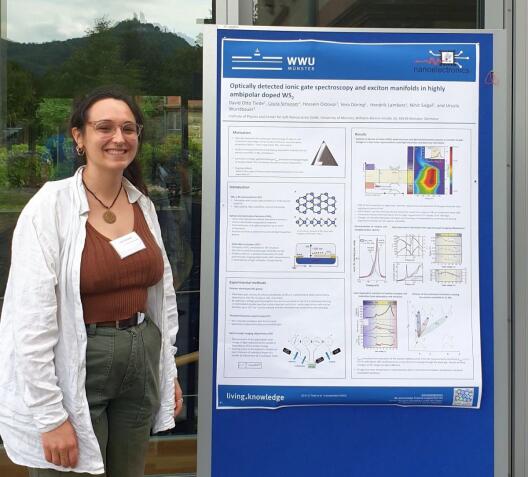
July 2022
Laura, Sven & Ursula joined at Bad Honnef Physics School “As thin as it gets: Physics of 2D Materials and Heterostructures”
Part of AGW kicked-off the summer conference / meeting / school season in Bad-Honnef – one of the first in person meeting since two-years and hence the first for Master students Laura and Sven who both presented posters. Ursula joined the “lecture Jam-Session” on Raman, PL and excitons in 2D materials together with Profs. Agnieszka Kuc, Janina Maultzsch and Alexey Chernikov. Many thanks to the scientific organizers of the school, Prof. Marika Schleberger and Prof. Martin Mittendorff, as well as the Heraeus foundation and DPG for support.
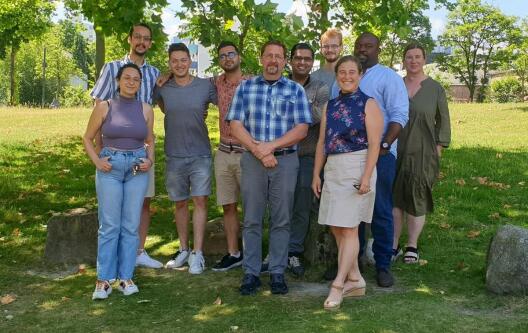
June / July 2022
Exciting and fruitful month with our guest and WWU Fellow Prof. Joshua A. Robinson (Penn State University, USA)
We enjoyed a very fruitful and enjoyable month with our collaboration partner and WWU Fellow Prof. Joshua A. Robisnon from Penn State university, who joined AGW for 4 weeks in June and July with lots of discussions and activities in the lab and beyond. It was an exciting and productive time.
Thanks, you very much for staying with us. We are looking forward to continue and intensify our collaboration!
June 2022
Time to say good-bye
With mixed feelings we have to say good-bye to our Postdoc Torsten. We will miss you and at the same time we wish you and your family all the best, success and happiness.
Delicious and sportive lunch break at the “Physik Fachschaft Sommerfest”
Many thanks to all organizers and supporters from the student body of the physics faculty for preparing such a nice party even if the weather did not really cooperate. The barbecue with all kind of options was a welcome and very tasty alternative to the student cafeteria and the delicious self-made liquid nitrogen ice-cream is a real insiders’ tip. We are already looking forwrad to this delicious refreshment next year. The study board was really worried about our health and provided a healthy exercise option by the bouncy castle (including free training of the risible muscles for all).
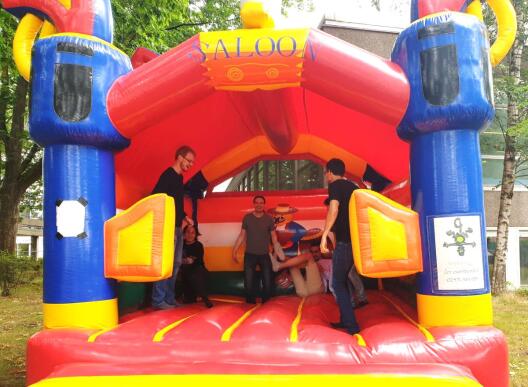

February 2021
Quantum Science & Technology Seminar by AG Wurstbauer & AG Schuck
On February 1st we had our last “Quantum Science & Technology Seminar (QST)” seminar held together with the AG Schuck with alternate talks by members of both groups. What was planned and started as hybrid lunch-time “Pizza-Seminar” ended as online seminar - charge it to Covid. Nevertheless, we had exciting talks, intense discussions and learn a lot from the quantum technology and quantum science world and got to know each other such that even two collaborative projects are initiated by the QST seminar.

Wir begrüßen unser neues Arbeitsgruppenmitglied - Herrn Müller. Auch wenn Herr Müller nicht wirklich ein Teamplayer ist und lieber alleine arbeitet, so fügt er sich doch gut in die Arbeitsgruppe ein. Wir freuen uns sehr über seine tatkräftige Unterstützung während der ruhigen Nachtschicht ... ;-)
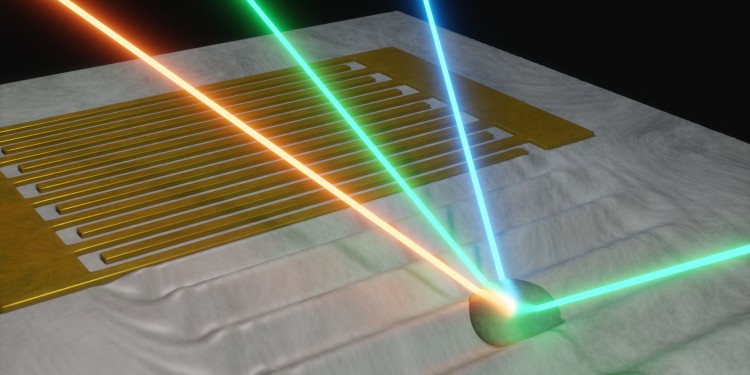
Physiker der Universität Münster bei Großgeräteinitiative erfolgreich
Deutsche Forschungsgemeinschaft fördert neues Gerät für die Quantenkommunikation
Ein Team vom Physikalischen Institut der Westfälischen Wilhelms-Universität (WWU) Münster war bei der Großgeräteinitiative „Quantenkommunikation“ (QCDE) der Deutschen Forschungsgemeinschaft (DFG) erfolgreich: Die Wissenschaftlerinnen und Wissenschaftler erhalten ein „Millikelvin-Mikrowellen-Photonik-Messsystem“, mit dem Bauelemente für die Quantenkommunikation untersucht werden sollen. Die DFG stellt hierfür rund 2,7 Millionen Euro zur Verfügung. Die Quantenkommunikation gilt als eine der Schlüsseltechnologien der Zukunft, bei der Informationen durch einzelne Lichtquanten, sogenannte Photonen, übertragen werden. Diese Art der Datenübertragung ist nicht nur schnell, sondern vor allem besonders abhörsicher.
Am Physikalischen Institut werden Quantenbauelemente für die Quanteninformationsverarbeitung entwickelt, deren Leistungsfähigkeit die Forschungsgruppen mit dem nun bewilligten Großgerät untersuchen können. Herzstück des neuen Geräts ist ein mit optischen Fasern und Hochfrequenzelektronik ausgestattetes Messsystem, in dem Quanten-Chips auf Temperaturen von nur wenigen Tausendstel Grad über dem absoluten Nullpunkt abgekühlt werden. Mit diesem einzigartigen Gerät sollen einzelne Photonen in atomar dünnen Materialien erzeugt und dabei mithilfe von Nanoschallwellen in bisher unerreichter Präzision getaktet werden. Im selben Gerät können aber auch die passenden in Münster entwickelten supraleitenden Einzelphotonen-Detektoren vermessen werden.
Über den nun bewilligten Antrag freuen sich neben Koordinator Prof. Dr. Hubert Krenner auch Prof. Dr. Ursula Wurstbauer, Prof. Dr. Rudolf Bratschitsch und Prof. Dr. Carsten Schuck, die am Projekt beteiligt sind. Am Physikalischen Institut startet in Kürze der Umbau der Laborräume, in denen das neue Großgerät aufgebaut und für Spitzenforschung zur Verfügung stehen wird. Es bildet eine wichtige Schnittstelle zum im Aufbau befindlichen Department für Quantentechnologie des Fachbereichs Physik der WWU sowie zu externen Kooperationspartnern für die Erforschung neuartiger Quantenbauelemente.
Großgeräteinitiativen der Deutschen Forschungsgemeinschaft
Im Rahmen von Großgeräteinitiativen können Wissenschaftlerinnen und Wissenschaftler bei der DFG aufwändige Großgeräte mit herausragender, innovativer Technik beantragen, mit der besonders zukunftsweisende spezielle wissenschaftliche und technische Fragestellungen untersucht werden können.
Mit der Initiative QCDE möchte die DFG Wissenschaftlern neueste Technologie zugänglich machen, die für die Erforschung von Quantenkommunikations-Systemen eingesetzt wird. QCDE soll dabei ein Schritt hin zur Standardisierung von Quellen, Transmittern und Detektoren für die Quantenkommunikation sein. Bislang werden vielfältige Ansätze vor allem mit hochspezialisierten Laboraufbauten entwickelt und getestet.
Meldung der DFG: Großgeräteinitiativen zur Erforschung von Quantentechnologie
Successfully kicking-off of the new year:
- Our work on “Domain textures in the fractional quantum Hall effect” has been published in Physical Review Letters and our work on “Optical dipole orientation of interlayer excitons in MoSe2-WSe2 heterostacks” in Physical Review B.
- Our review article jointly written with AG Bratschitsch (WWU), AG Kuhn (WWU) and our collaboration partner Prof. Holleitner (WSI) on “Single-photon emitters in layered van der Waals materials” is online.
- Together with Torsten, we wrote an invited “Brennpunkt” on “Exotische Exzitonen” for the Physik Journal, the member journal of the German Physical Society (DPG), one of the largest physics society worldwide.
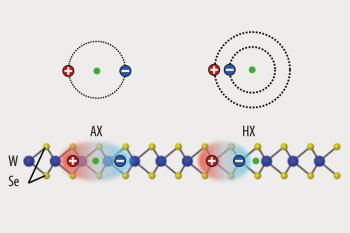
Warm welcome to our new Master student Sven. We look forward to a successful and great time with you.
December 2021
Also this year we had to change our plans. Due to the current Corona situation we had another virtual Christmas party. We had a lot of fun and team work was required to successfully solve the puzzles in virtual escape room games. Afterwards the relaxing part with lots of fun and laughter started. Big thanks to the hard-working “Secret Santas” 😊. And for sure we will go out for the planned Boßel-competition as soon as the situation allows.
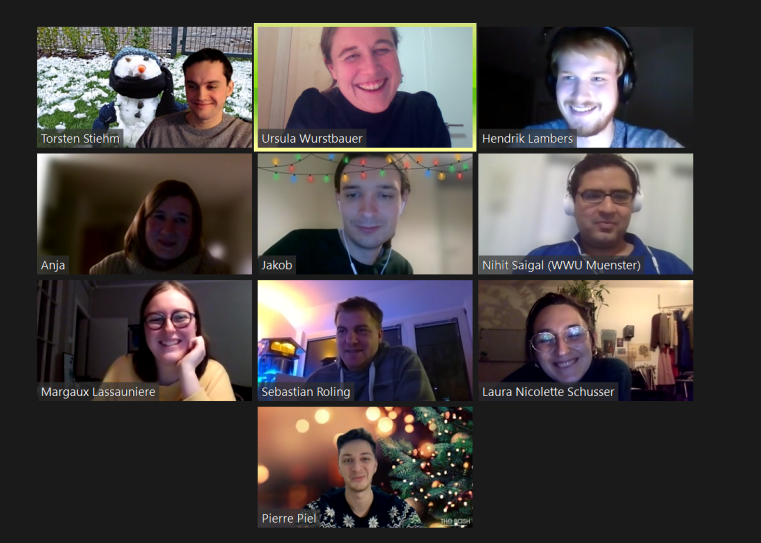
December 2021
Warm welcome to Anthony. Anthony will work on his Master project jointly with Prof. Carsten Schuck’s group and us. We look forward to a successful and great time with you.
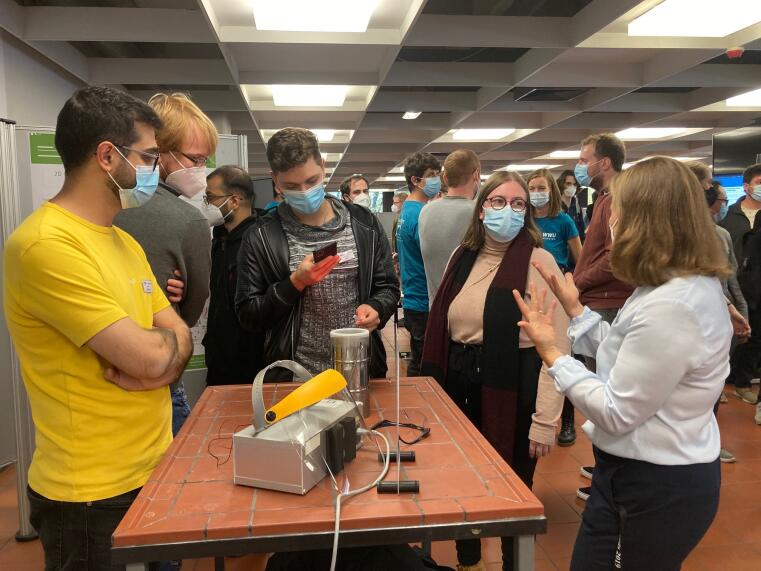
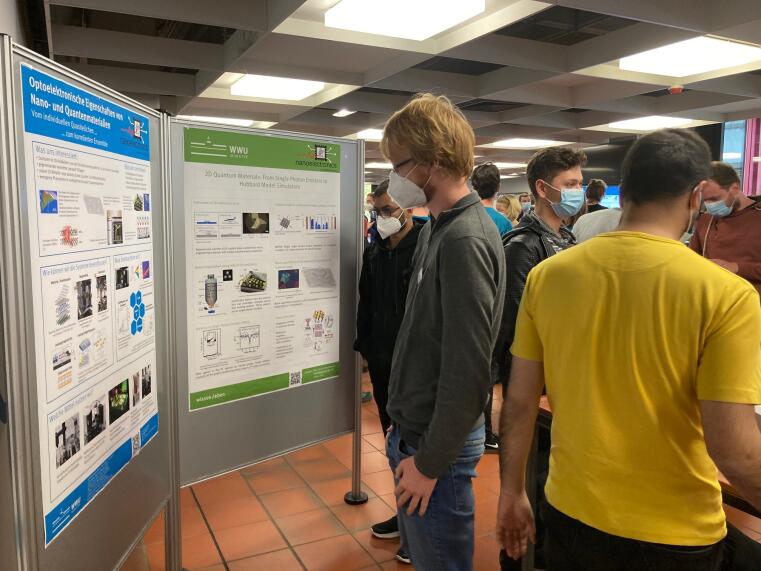
Thank you for visiting our booth at BaMa Day 2021 and for your interest in our scientific work. If you would like to become part of our working group, do not hesitate to contact us.

Hamburg: 29.09. – 01.10.2021 - Workshop on nanoelectronics and correlations in 2D materials
Members of the core groups headed by Prof. Wurstbauer (University of Münster) and Prof. Wehling (University of Bremen and University of Hamburg).
The scope of the workshop is to present and discuss the status of ongoing research projects between the individual members of the two groups in order to foster ongoing collaborations. More precise, we intend to stimulate discussion that may lead to new insights, new achievements, novel experimental or theoretical approaches or even to new research projects. The group of Prof. Wehling is focused on theoretical investigations of the electronic structures of (correlated) solid state materials with a strong interest in 2D materials. The focus of the Wurstbauer group is experimentally on the exploration of optical and electronic properties of tailored quantum nano-systems with a strong interest in 2D materials. The groups work already on a joint DFG funded project. This meeting will allow for intense and mutual discussion on the ongoing research project, the technical implementations, the data handling as well as the organization, planning and management of the project. To advance the current work and to promote further collaboration is important that the researchers of both groups know each other, find a common language and communication basis as well as understanding about the scientific methods and skillsets. Due to the ongoing pandemic situation an on-site meeting of the project groups was not yet possible, hence urgently needed.
Moreover, the pandemic situation made typical meetings and conferences in presence impossible such that in particular the younger / newer members of the groups on all levels could not practice scientific and/or project related spontaneous presentations, explanations and discussions that are highly important for a successful and efficient development of projects at academia and beyond. The workshop provides an intense training on scientific communication with an emphasize on transferring ideas, overarching goals, achievements and challenges by a free speech (without support by slides or other media). There will be ample time for practice and feedback rounds on both, the communication skill as well as the scientific content. All participants mandatorily contribute to both parts, by giving speeches and participate in the feedback discussions.
The workshop will be held in appliance with the current Corona regulations from both universities and the City of Hamburg. The schedule is prepared such that time outside is maximized and time in closed rooms is minimized and limited to smaller subgroups.
Vortragende
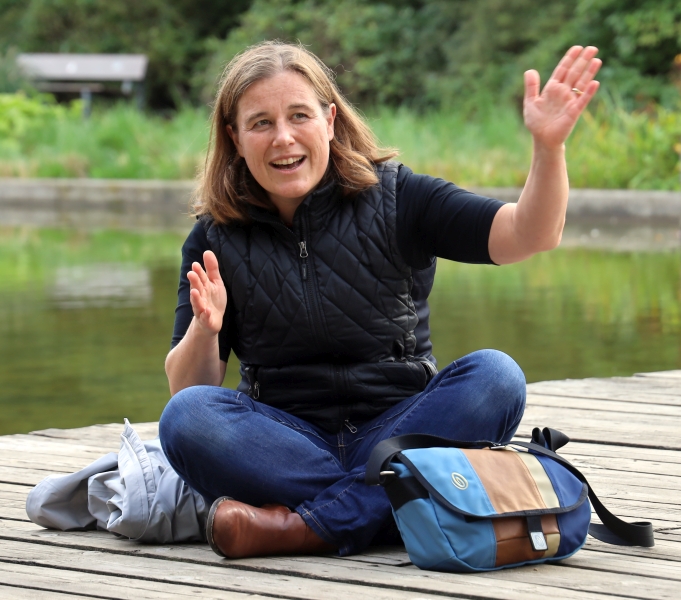
We warmly welcome Sina to our group. We look forward to a successful and great time with you.
September 2021: We used the warm nice weather for a spontaneous "after work drink" with lots of chats, laughter and delicious beer with surprising though exquisite tastes. Thank you all for coming and special thanks to our brewer in the team!
September 2021: We warmly welcome Pierre who will begins his career as a PhD student. We wish you great success and we look forward to great and enjoyable time with you.
July 2021: Welcome to our new working student Clemens! We are happy having you here and we wish you success and an enjoyable time.

Lots of activities in June and July:
We participated at the Leonardo-Campus-Run at the “5000” steps composition as a group having a nice walk around Münster with a lot of fresh air, sun, some laughers and of course sufficient physical distance. Afterwards we refreshed with tasty cold isotonic beverage specially brewed at the “Stone circle” (Thank you Sebastian!).
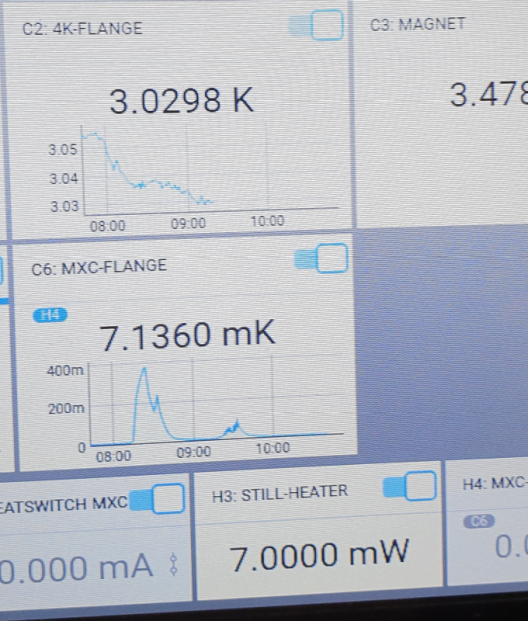
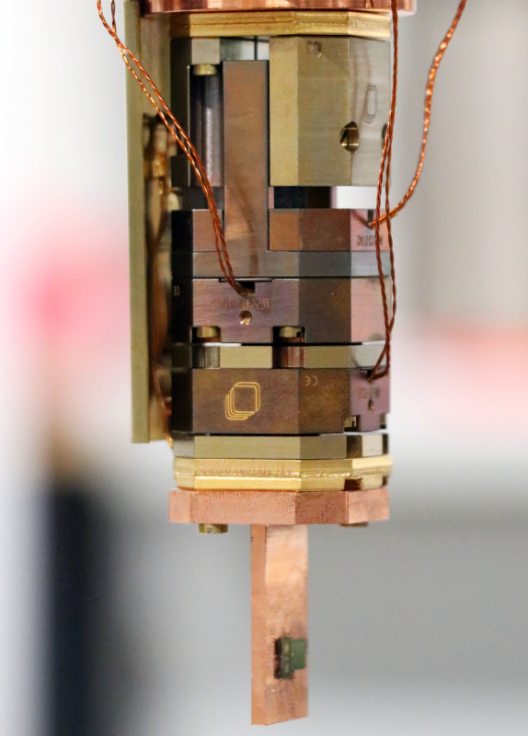
The mK-System is no equipped with the piezo actuators and the low-temperature objective - and it is still super cold with a record of 7mK with open windows and some light on the sample! Well done to the team in particular Frank and Torsten and of course the team of the Machine Job.
Everything was finished just in time for your guest researcher Flo from Munich who will join us for some exciting measurements on van der Waals heterobilayers.
The characterization set-up I is ready and the time-resolved set-up with the gated ICCD are ready as well. Characterization set-up II is currently planned. Well done to all, in particular to Nihit together with the others.
Our “kiuty” enjoys the low temperatures and is busy with temperature dependent transport and ellipsometry experiments. Simultaneously, the SIE is running almost continuously – a great team effort!
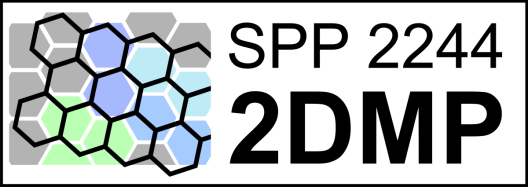
We organized the first summer school of the SPP2244 “vdW assembly – more than playing Lego” which had to be held virtually. Nevertheless, we had excellent talks, active poster discussions and lab tours, tons of discussions and some chats beyond research.
In this contest: Congrats to Hossein for being elected as student representative of the SPP2244. Many thanks for your service to the community.
End of June: Time to say good bye: Iris and David are moving to their next positions, both in Spain. Iris is doing a Posdoc at the CIC nanoGUNE in San Sebastian and David starts as a PhD student at ICMS-CSIC in Seville. We thank you both for the enjoyable and successful time and wish you all the best for your future in science and beyond and hope to see you again at the one or the other occasion.
Juni 2021: Im Rahmen eines einwöchigen Schulpraktikums konnten Alicia und Johannes interessante Eindrücke aus dem Arbeitsalltag von Physikern/Physikerinnen gewinnen. Neben dem Mitarbeiten in physikalischen Laboren, konnten die beiden aber auch ihre handwerklichen Fähigkeiten ( z.B. beim Löten) testen. Voller Stolz über die komplett selbsterstellte erste CAD-Zeichnung einer Pfeife, ging es anschließend an einen 3D-Drucker, der das kleine Andenken an ihre Zeit bei uns in die reale Welt übertrug.
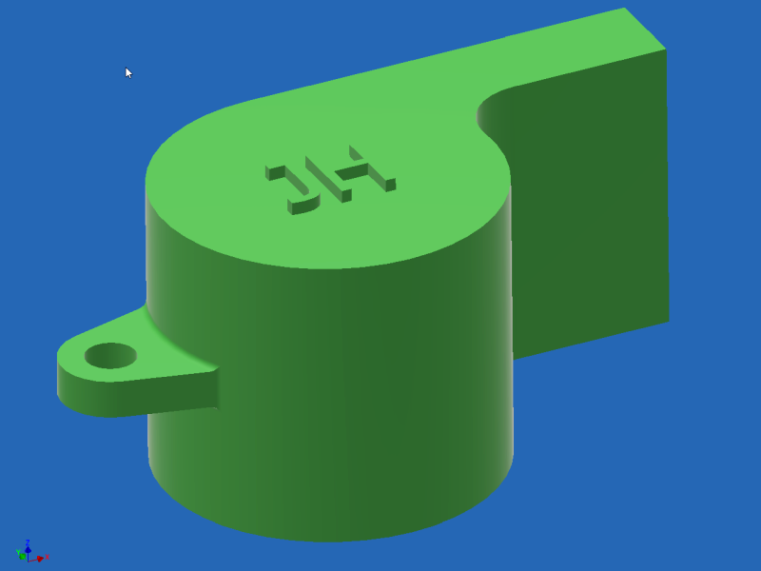
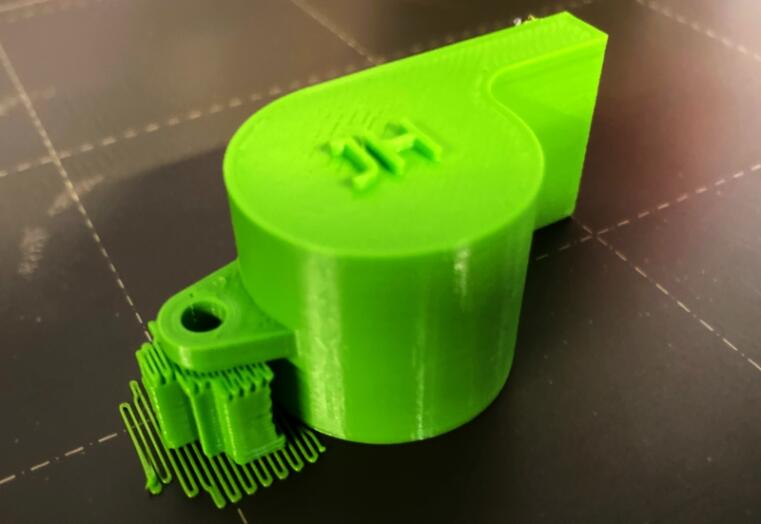
Juni 2021: Wir heißen unsere beiden Bachelor Studierende Lucie und Msab „Mo“ und unsere Werkstudentin Laura herzlich willkommen. Wir wünschen Euch viel Erfolg und eine tolle gemeinsame Zeit in der AG.
June 2021: We welcome our new Bachlor students Lucie and Msab "Mo" to the group and our working student (SHB) Laura how already did a great job in supporting us with her soldering and exfoliation skills. We wish you all a successful and pleasant time.
Fotos
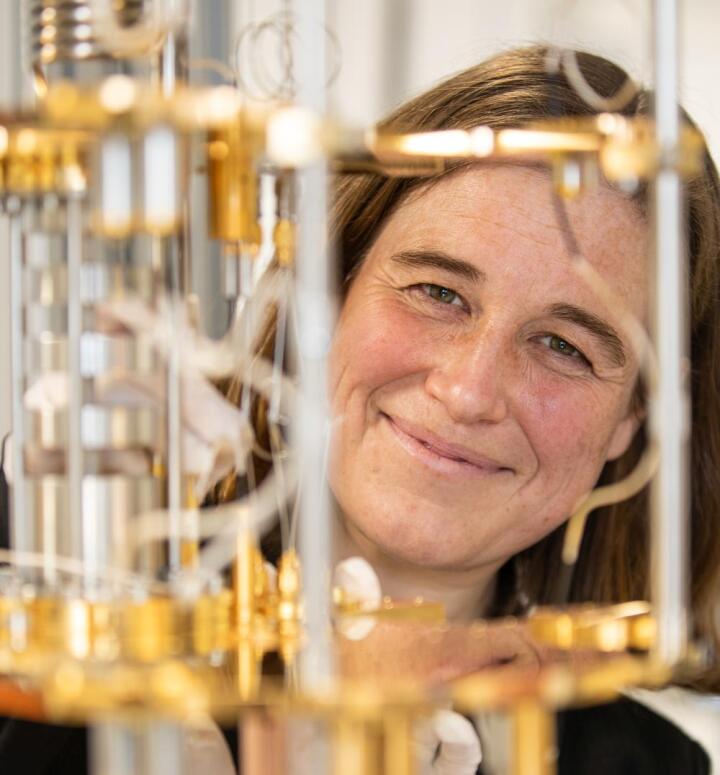
March 2021
Our congratulations on successfully completing the master’s degree go to our working group member Hendrik Lambers. Nice that you stay with us as a PhD student.
February 2021
We warmly welcome Nihit and Hossein. Nihit will strengthen our working group as a postdoc. Hossein begins his career as a PhD student. We look forward to a successful and great time with you.
Ein weiteres Labor konnte vor wenigen Tagen in Betrieb genommen werden. Mi vereinten Kräften bauten unsere Arbeitsgruppenmitglieder mit den Spezialisten der Fa. kiutra Cryostats erfolgreich das Cryogen-free Magnetic Refrigerators-System auf.
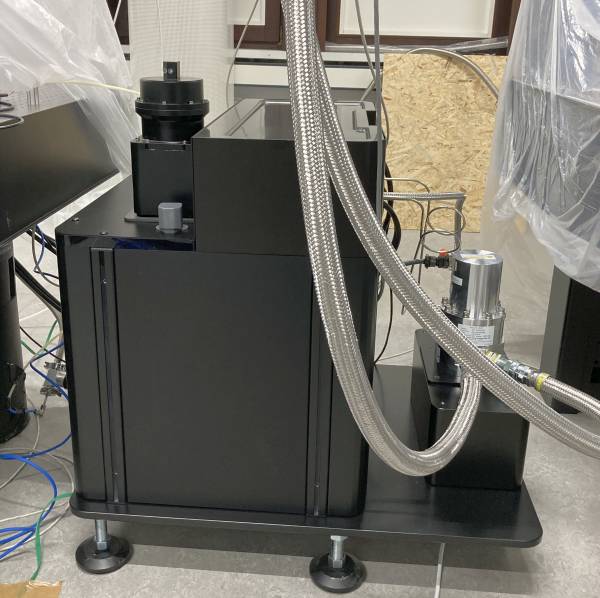
Mit voller Zuversicht startet die Arbeitsgruppe in das neue Jahr 2021. Die Baumaßnahme/Umbau der Labore steht kurz vor dem Abschluss. Vor einigen Tagen konnten wir bereits voller Freude unser neues LD Dilution Refrigerator System der Fa. Bluefors in Betrieb nehmen.
Bluefors LD Dilution Refrigerator System

Größer hätte sie nicht sein dürfen, sonst hätte sie nicht durch die Türen gepasst. Auch unsere neue Glovebox wurde vor wenigen Tagen in Betrieb genommen.
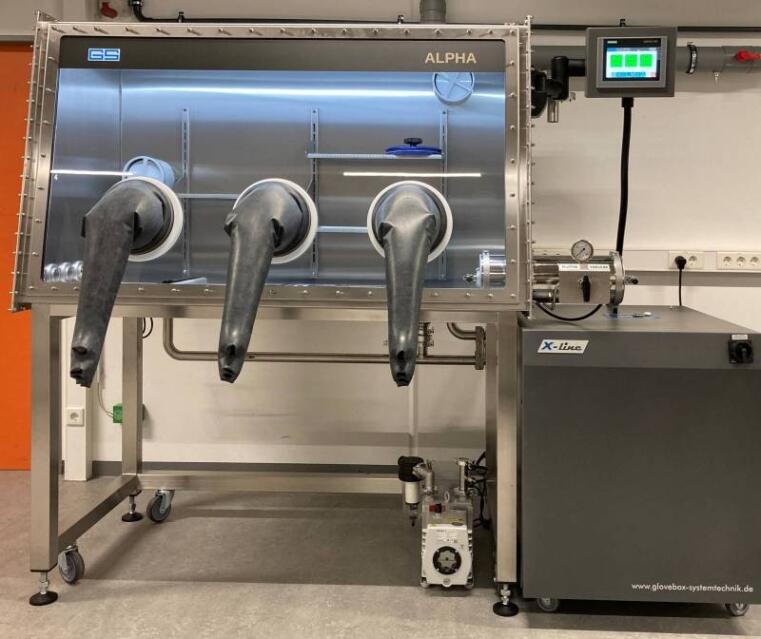
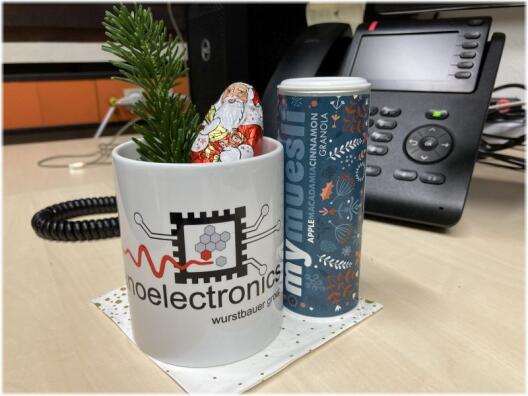
There was a big surprise today. Santa Claus brought something great. Thank you dear Santa Claus.
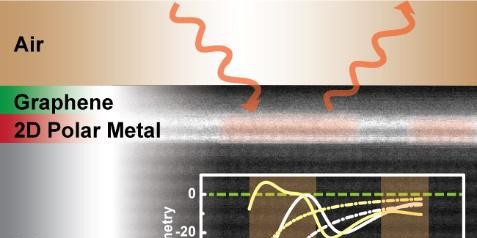
30.10.2020
Ultradünne Metalle beeinflussen die Wechselwirkung zwischen Licht und Materie
Nanowissenschaften: 2-D-Metalle ermöglichen die Entwicklung neuartiger Funktionalitäten und Anwendungskonzepte
Es gibt viele Materialien, die faszinierende Eigenschaften haben. Sogenannte 2-D-Materialien, wie zum Beispiel Graphen, sind seit über 100 Jahren bekannt und ein hoch-aktueller Gegenstand der Grundlagenforschung. Wie sich elektromagnetische ... Weiterlesen
12./12. 10 2020
Kick-Off Workshop of the DFG Priority program SPP 2244 on "2D Materials – Physics of
van der Waals [hetero]structures" in Erfurt.
With our project partner Prof. Tim Wehling from Bremen University we are proud to participate in the just funded SPP 2244 with our project "Correlated miniband and multivalley physics in twisted transition metal dichalcogenides".
The SPP 2244 is coordinated by the steering committee headed by Prof. Thomas Heine from TU Dresden. Prof. Ursula Wurstbauer is part of the steering committee together with Profs. Jaroslav Fabian (University of Regensburg), Janina Maultzsch (FAU Erlangen-Nürnberg), Christoph Stampfer (RWTH Aachen).
16.10.2020
New paper published!
Congratulation to Katharina, Shruti (former exchanges PhD) and Margaux for pubishing their interesting work with the title "Light-matter interaction in quantum confined 2D polar metals" in Advanced Functional Materials!
Well done!
October 2020
Welcome Jakob and Torsten! Torsten joins the groups as Postdoc and Jakob is pursuing his Master project in the group We look forward to a successful and pleasant time with many activities in and outside the laboratory.
October 2020
Congratulation to David for the successful defense of your Master project. Even in these difficult times you managed to submit and defend an excellent thesis and doing a great job in setting up experiments. Well done!
We are happy that your joint journey continues.
October 2020
Congratulation to Vera and Ivo for the successful defense of your Bachelor projects. It was a great fun working together with you. Even in these difficult times you both managed to submit and defend an excellent theses. Well done!
We wish you all the best for your next steps!
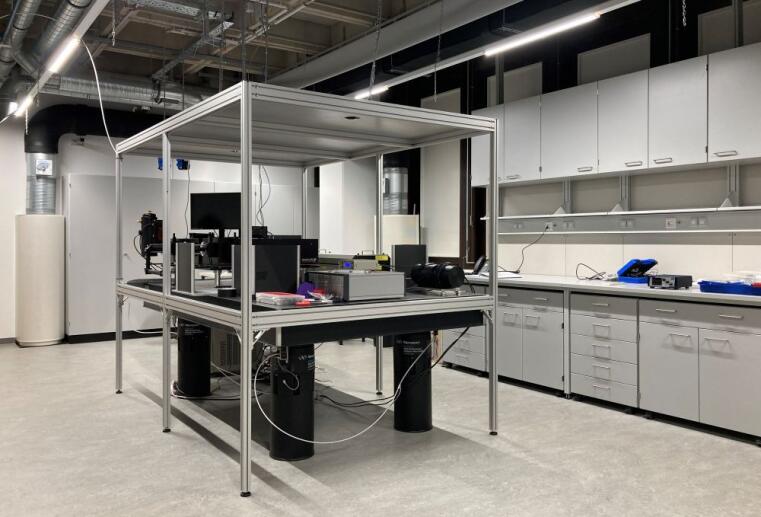
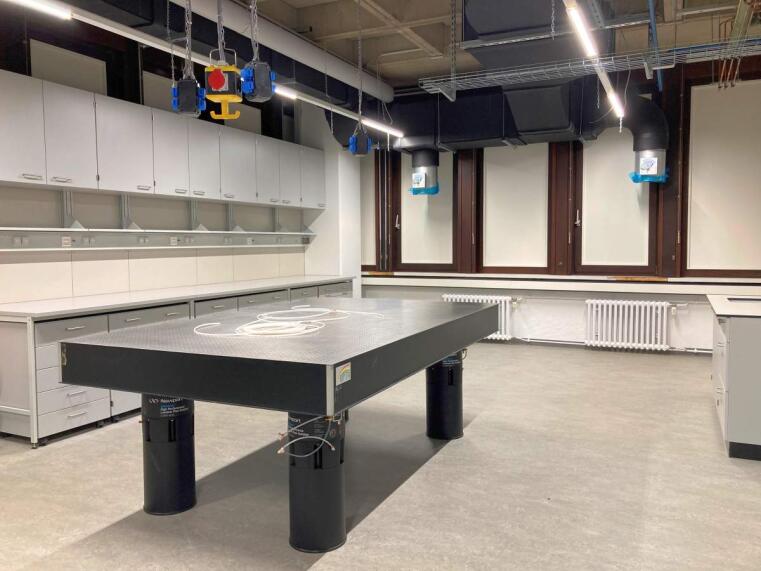
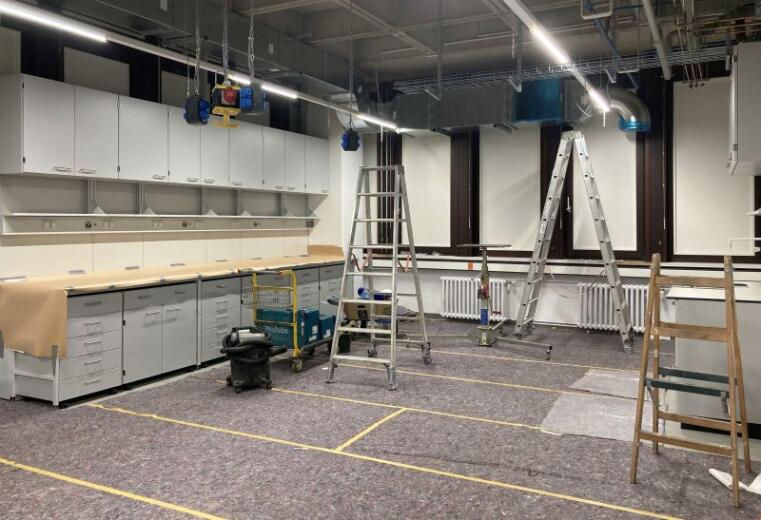
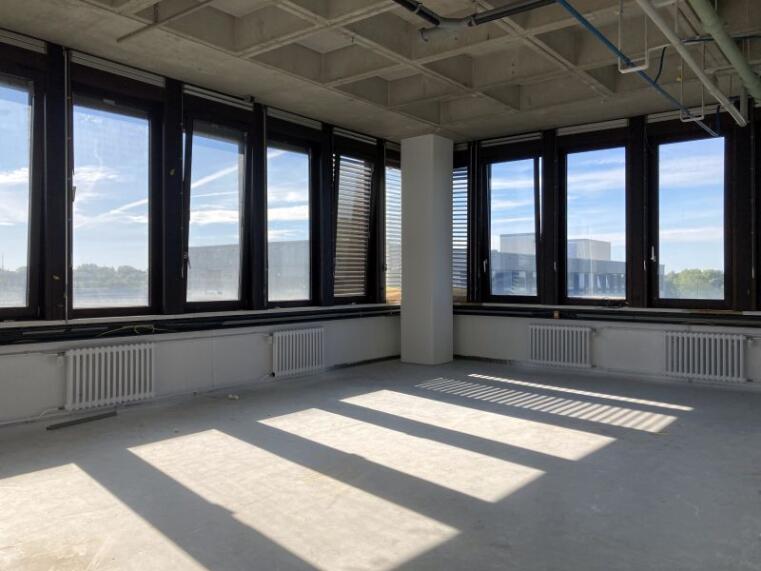
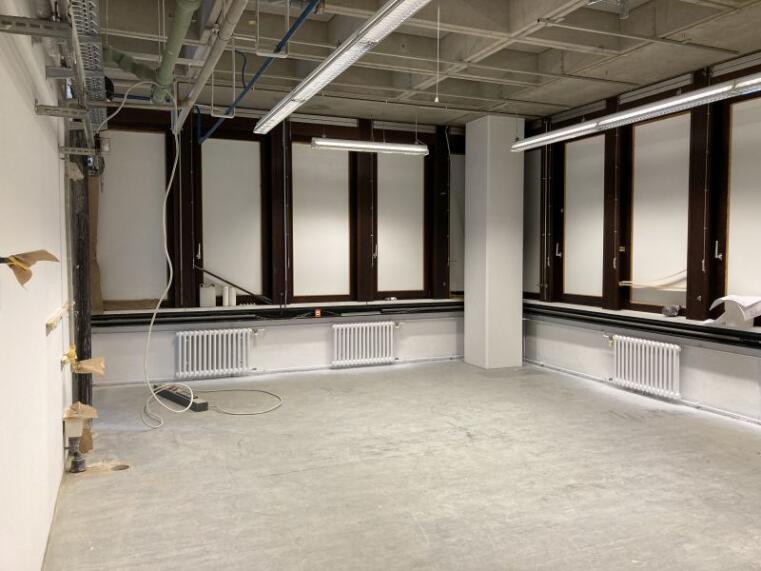
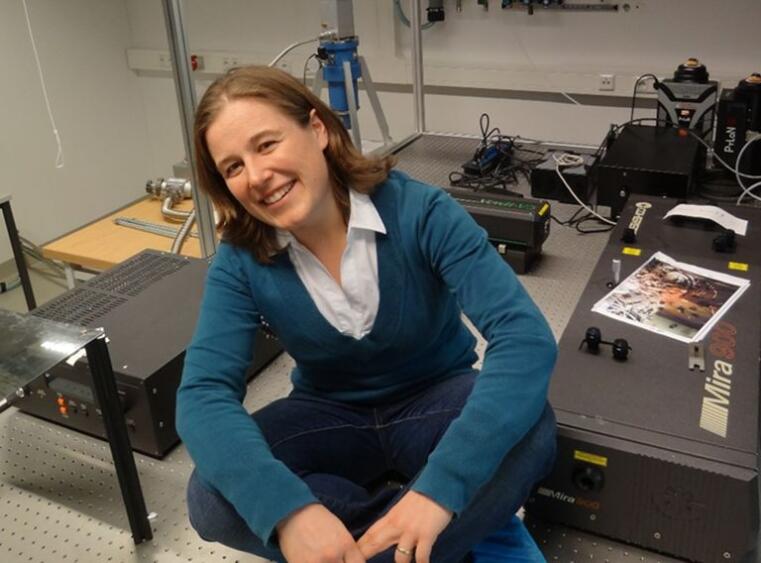
Physikerin der Woche 2020 - Prof. Dr. Ursula Wurstbauer - calendar week 25
Since January 2018 the DPG highlight/celebrate every week women in physics in Germany or German women in physics abroad.
Click here for the article ...
June 2020
The conversion work for our new laboratories has started. We are really looking forward to the new opportunities that will arise there ;-)
We wish the craftsmen of the various trades good luck.

June 2020
Congratulation to Katharina for the successful defense of your Master project. Even in these difficult times and with a lot of traveling you managed to submit and defend an excellent thesis and to preform cutting-edge research. Well done!
We wish you all the best in your PhD work at the TU Munich and looking forward to collaborate with you in the future.
The short new link to our homepage ... www.wurstbauer-nanoelectronics.de

April 2020, Sebastian Funke joined the group as our second PhD student.
Welcome Sebastian! Looking forward to exciting research, interesting conversations and a lot of fun over the next years.
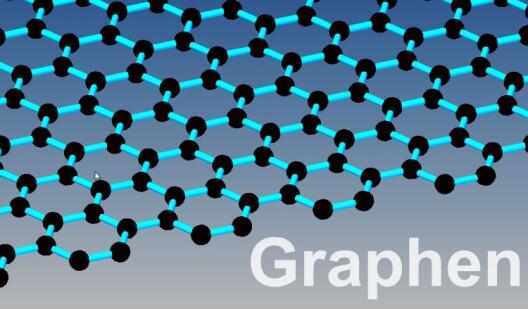
Zukunftswerkstoff Graphen
Der flache Alleskönner
20.02.2020 - Podcast von Jennifer Rieger und Frank Kaspar, Deutschlandfunk Kultur
Mit Interviews von Prof. U. Wurstbauer und Prof. R. Bratschitsch, Physikalisches Institut, WWU Münster
February 2020 Two new bachelor students joined the group.
Welcome Vera and Ivo! We look forward to a successful and pleasant time with many activities in and outside the laboratory.
18.02.2019 Paper online at Nature Communications.
Tuning the Fröhlich exciton-phonon scattering in monolayer MoS2
Bastian Miller, Jessica Lindlau, Max Bommert, Andre Neumann, Hisato Yamaguchi, Alexander Holleitner, Alexander Högele, Ursula Wurstbauer
See also a related press release.
16.01.2020 inaugural lecture of Prof. Dr. U. Wurstbauer
Ursula Wurstbauer gave her inaugural lecture on "quasiparticles, excitations, interactions and condensation in 2D systems" and gave an overview of her main research areas.
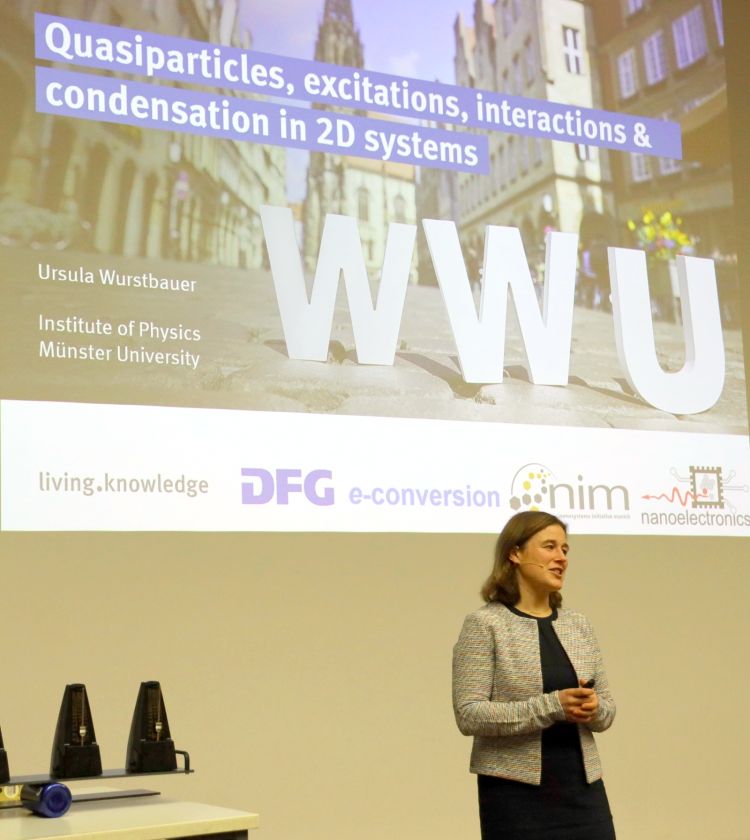
Fotos
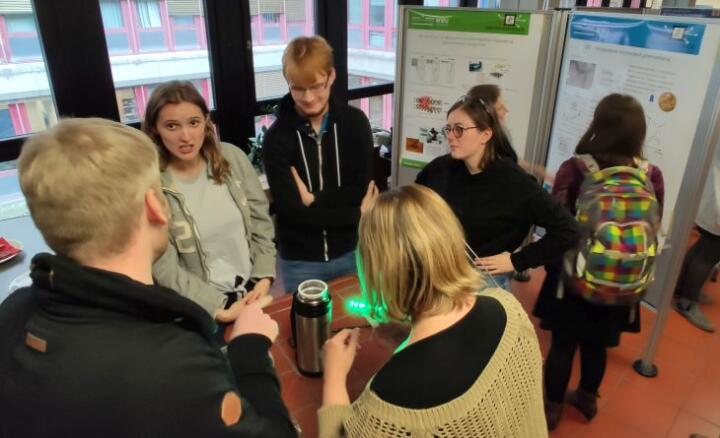
16.10.2019 First BAMA-Tag for the Wurstbauer group
We had tons of fun during the BAMA-Tag and already befire preparing our little experiments with blue, green and red LEDs and liquid nitrogen. If you are interested in joining our group for a Bachelor or Master project just drop us a note or come by. Interested students are always welcome!
Many thanks to the Fachschaft for perfect organisation!
October 2019 Three Master students joined the group.
Welcome Katharina, Hendrik and David! Looking forward to an succesful and enjoyable year with mannigfold activities in the lab - and beyond.
16.09.2019 Margaux joined the group as our first PhD student in Münster.
Welcome Margaux! Looking forward to exciting research, interesting conversations and a lot of fun over the next years.
August 2019 First Set-up running.
A custom designed imaging spectroscopic ellipsometer from accurion has been delivered and installed. Together with our visiting PhD student Flo from Munich we are excited about first data taken in our labs.
21.07.2019 Paper online at Nature Communications
Site-selectively generated photon emitters in monolayer MoS2 via local helium ion irradiation
J. Klein, M. Lorke, M. Florian, F. Sigger, J. Wierzbowski, J. Cerne, K. Mueller, T. Taniguchi, K. Watanabe, U. Wurstbauer, M. Kaniber, M. Knap, R. Schmidt, J. Finley, A.W. Holleitner.
15.07.2019 Paper online at Nature PJ 2D materials and applications
E. Mitterreiter, Y. Liang, M. Golibrzuch, D. McLaughlin, C. Csoklich, J. Bartl, A.W. Holleitner, U. Wurstbauer, A. Bandarenka.
July 2019 Group event.
We spend a very nice sunny day cycling around Münster with stop at the Rieselfelder watching birds and nature. We finished the day with a barbecue and some cold beverages.
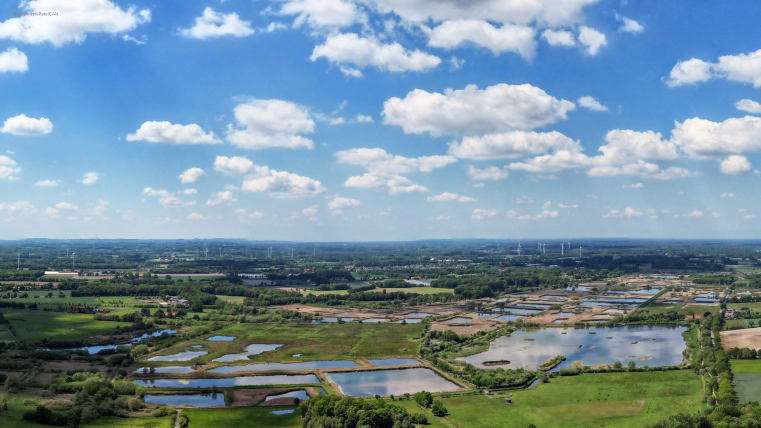
23.01.2019 New paper accepted:
Highly Reliable Contacts to Silicon Enabled by Low Temperature Sputtered Graphenic Carbon
Max Stelzer ; Moritz Jung ; Ursula Wurstbauer ; Alexander Holleitner ; Franz Kreupl
Accepted for publication in the IEEE Journal of the Electron Devices Society (https://ieeexplore.ieee.org/document/8624356).
Congratulations to all co-authors!
07.01.2019 What a good start – after only 1 week at the WWU, we have already two accepted publications.
Tuning the Fröhlich exciton-phonon scattering in monolayer MoS2
Bastian Miller, Jessica Lindlau, Max Bommert, Andre Neumann, Hisato Yamaguchi, Alexander Holleitner, Alexander Högele, Ursula Wurstbauer
accepted for publication in Nature Communications (preprint arXiv:1811.09320).
Observation of new plasmons in the fractional quantum Hall effect: interplay of topological and nematic orders
Lingjie Du, Ursula Wurstbauer, Ken W. West, Loren N. Pfeiffer, Saeed Fallahi, Geoff C. Gardner, Michael J. Manfra, Aron Pinczuk
accepted for publication at Science Advances.
Congratulations to all co-authors!
04.01.2019 New preprint online:
Atomistic defect states as quantum emitters in monolayer MoS2
Julian Klein, Michael Lorke, Matthias Florian, Florian Sigger, Jakob Wierzbowski, John Cerne, Kai Müller, Takashi Taniguchi, Kenji Watanabe, Ursula Wurstbauer, Michael Kaniber, Michael Knap, Richard Schmidt, Jonathan J. Finley, Alexander W. Holleitner
(arXiv:1901.01042).
02.01.2019 Preprint online:
Hybridized indirect excitons in MoS2/WS2 heterobilayers
Jonas Kiemle, Florian Sigger, Michael Lorke, Bastian Miller, Kenji Watanabe, Takashi Taniguchi, Alexander Holleitner, Ursula Wurstbauer
(arXiv:1901.01042 ).


















